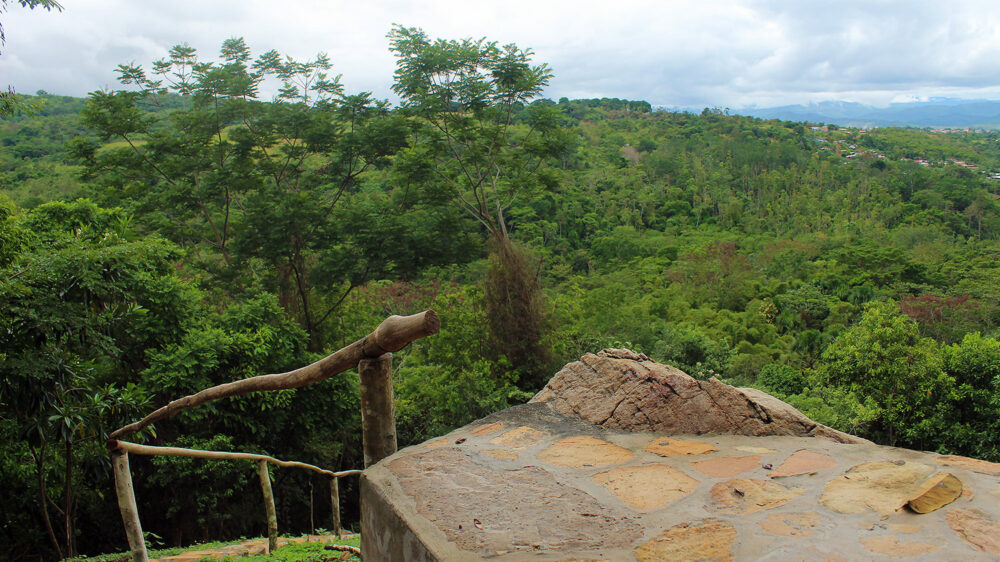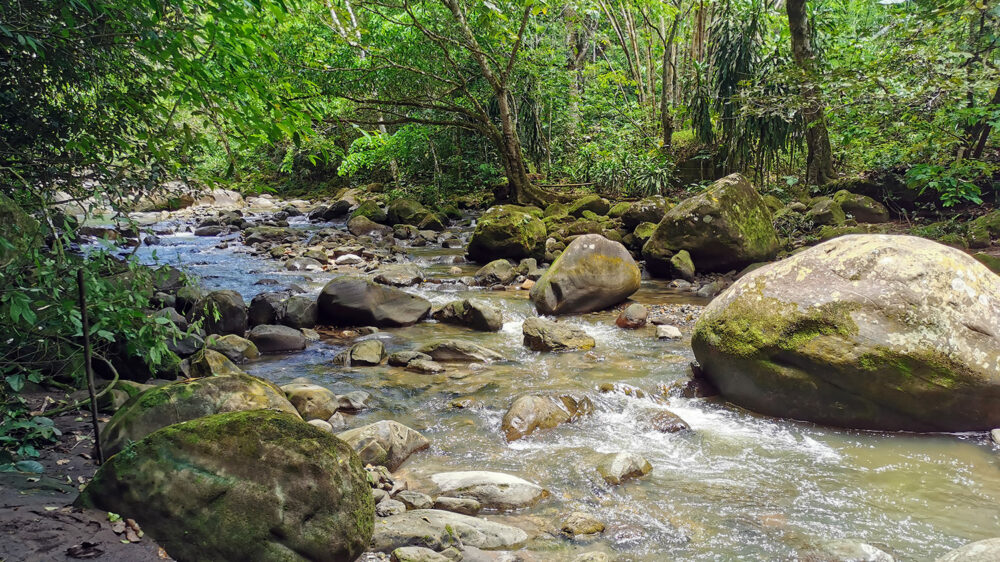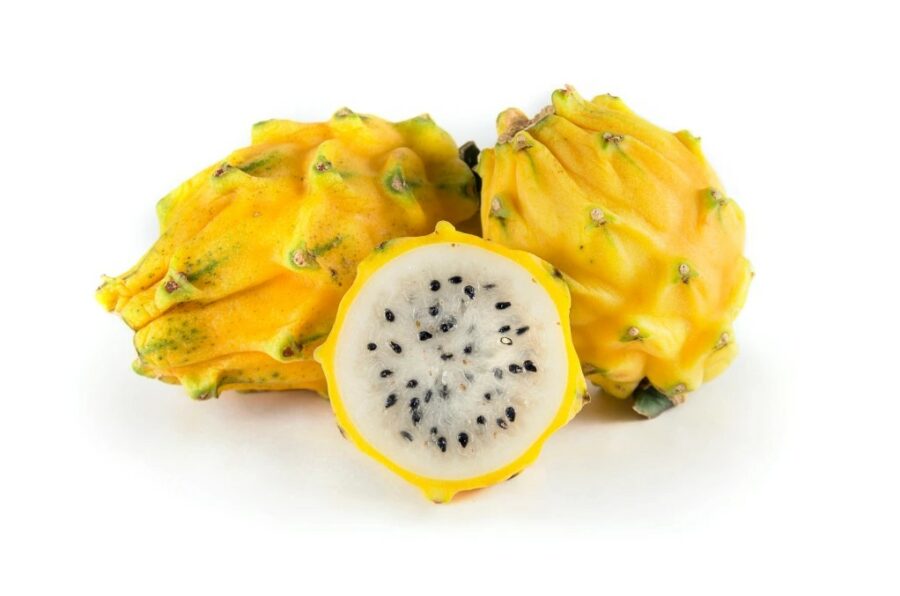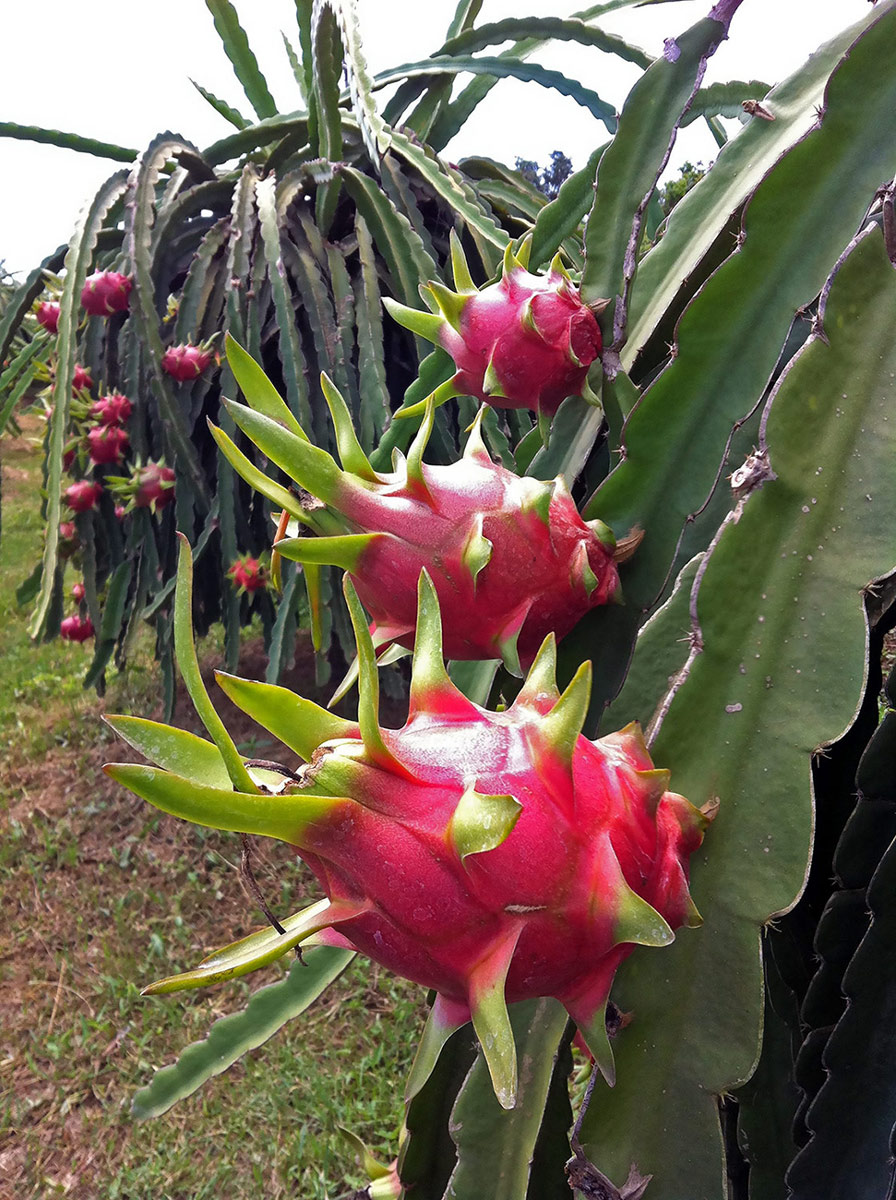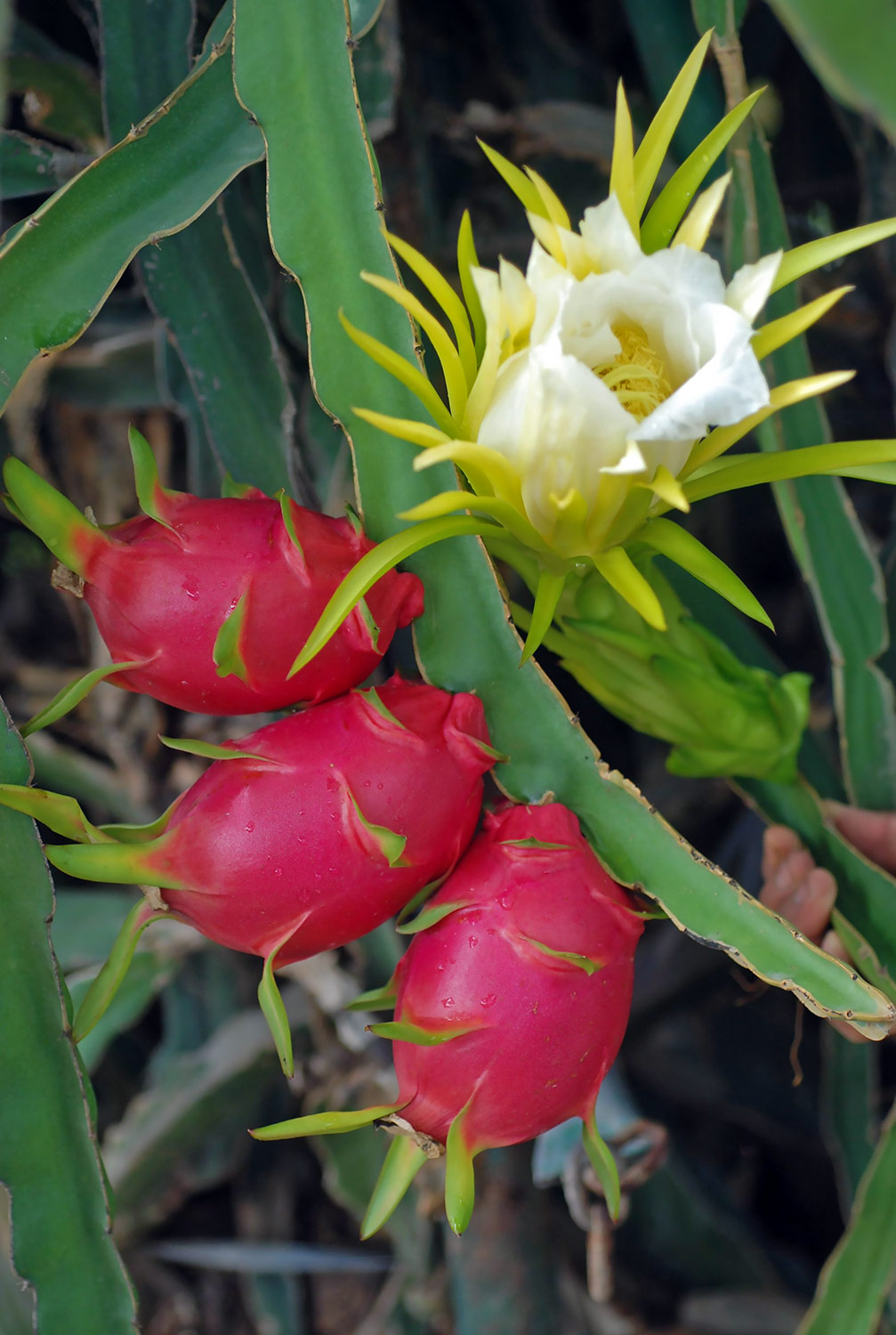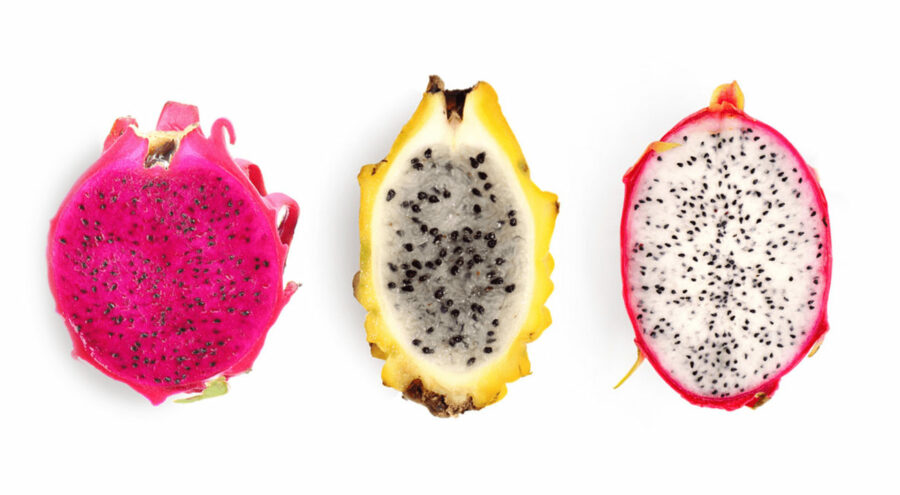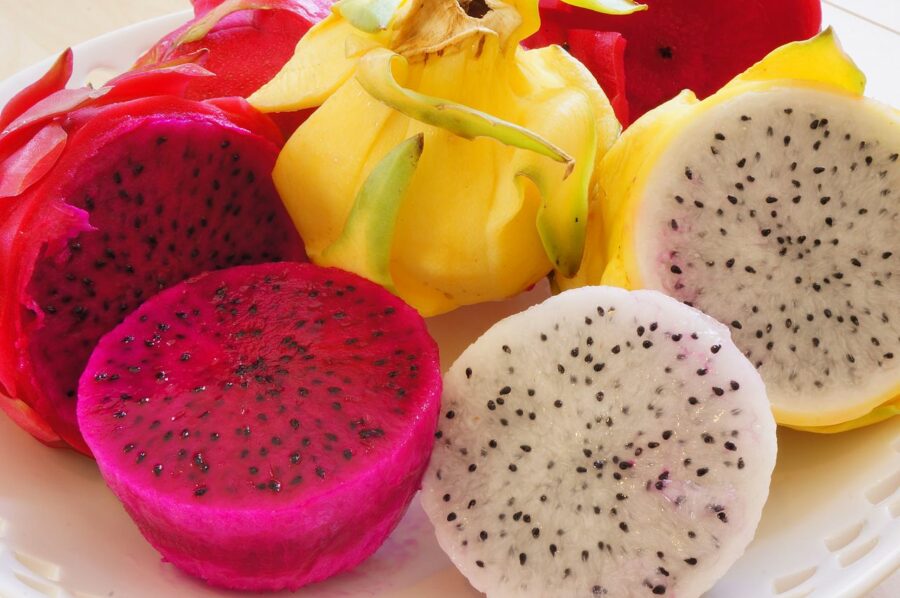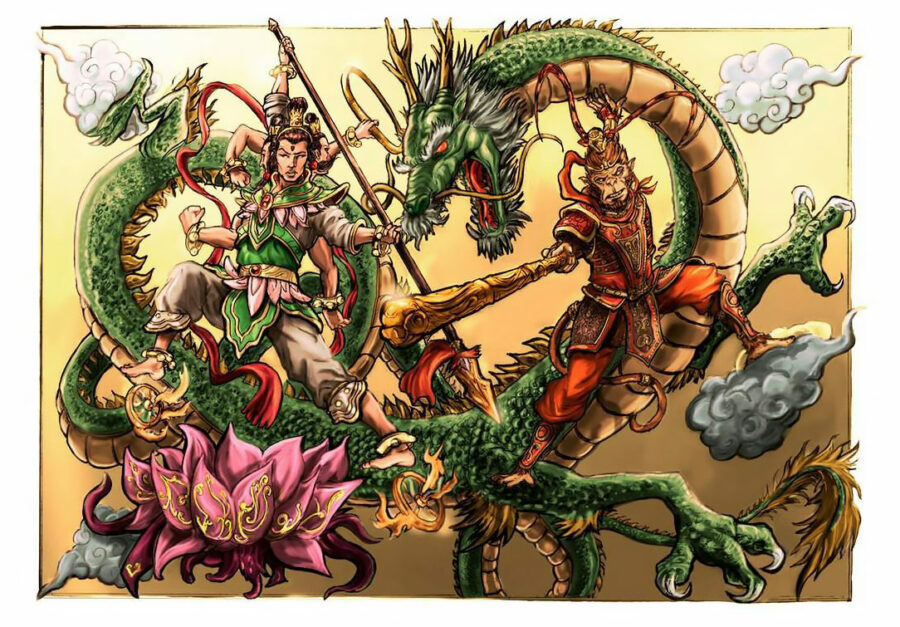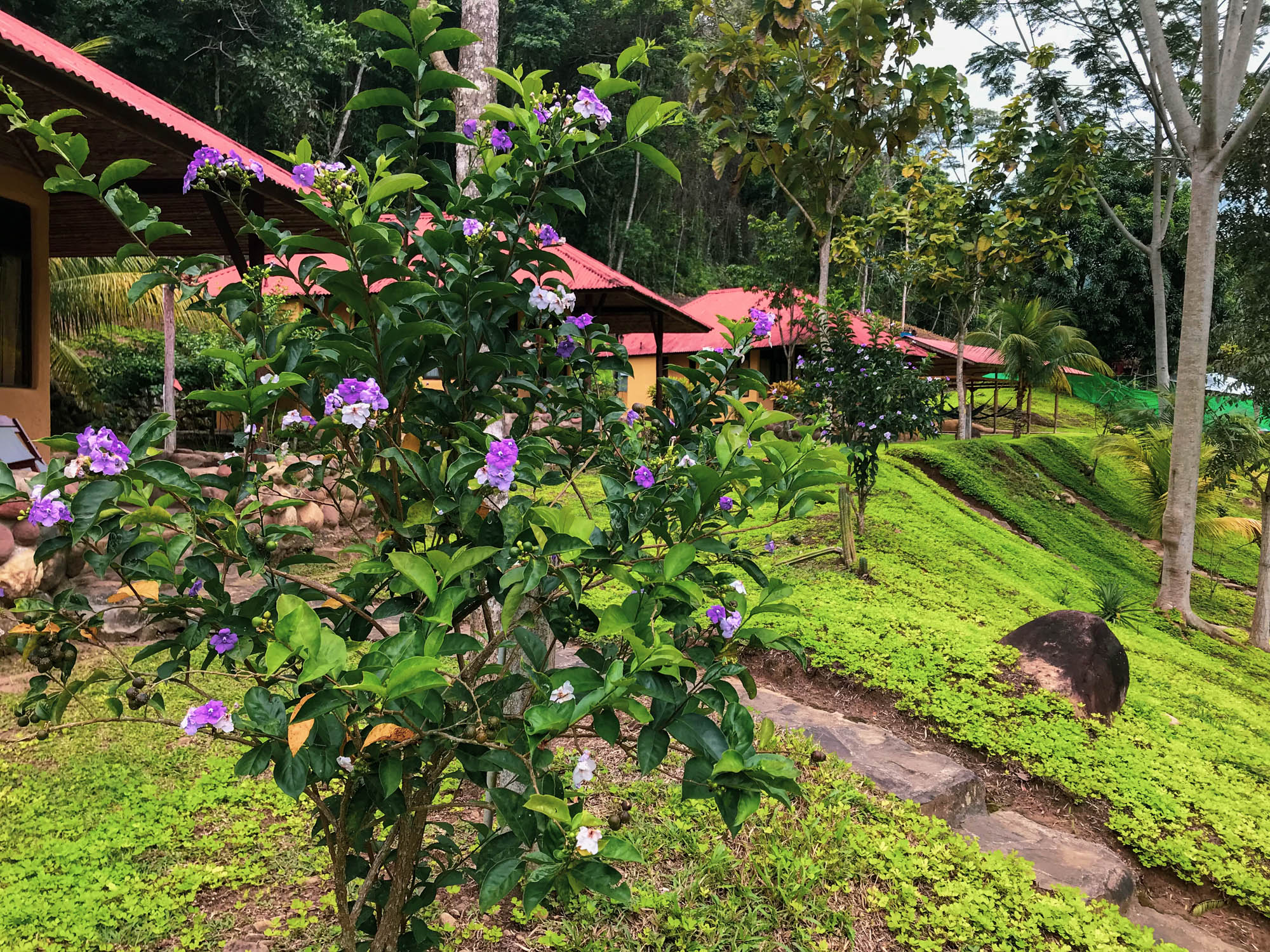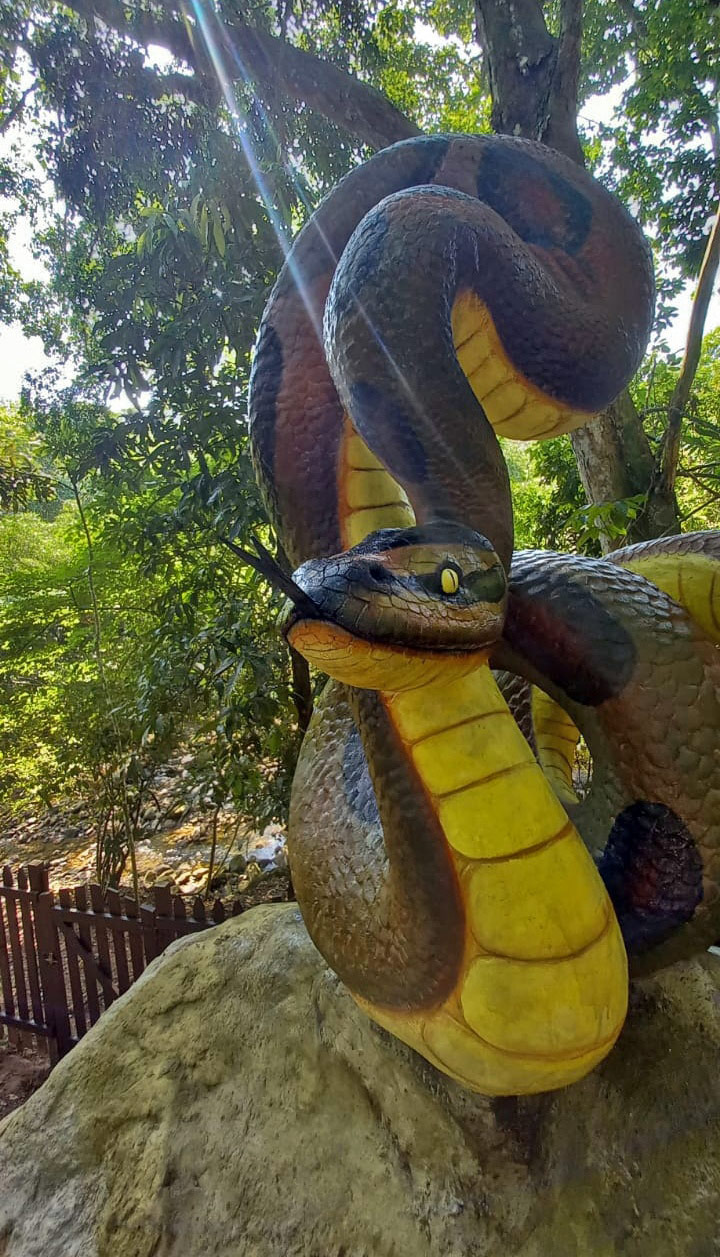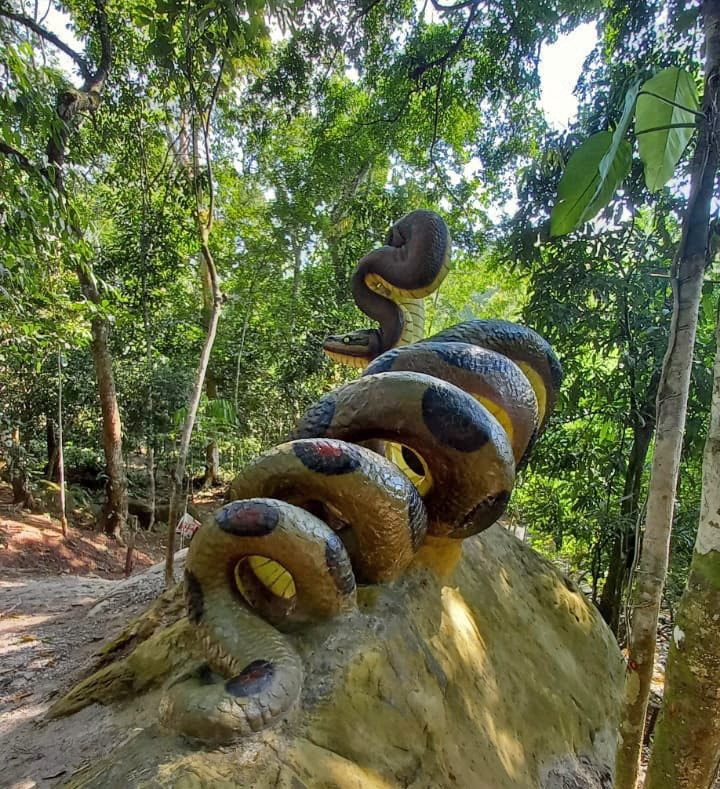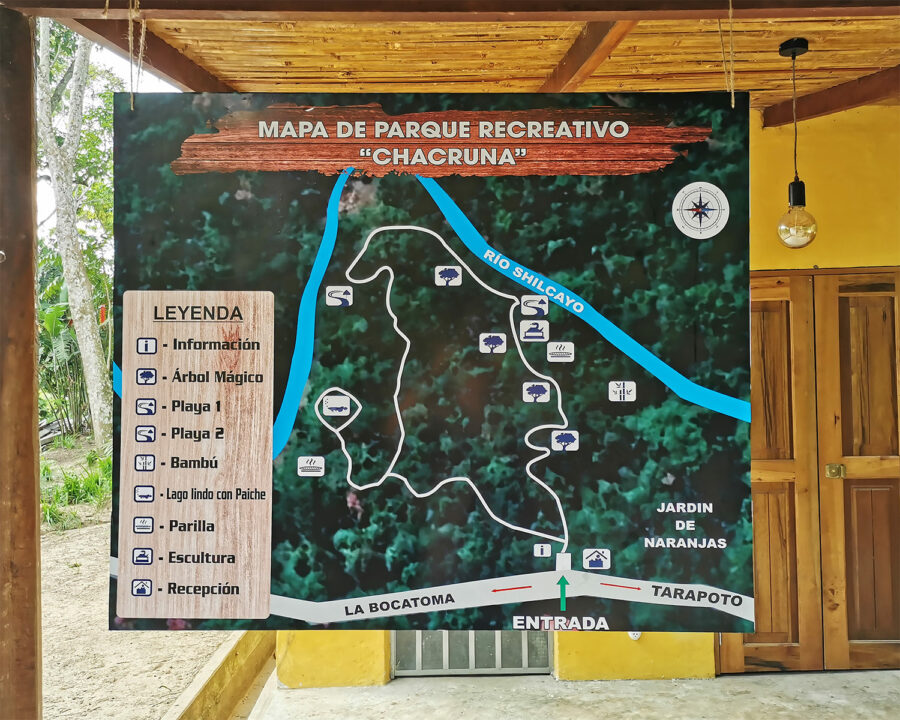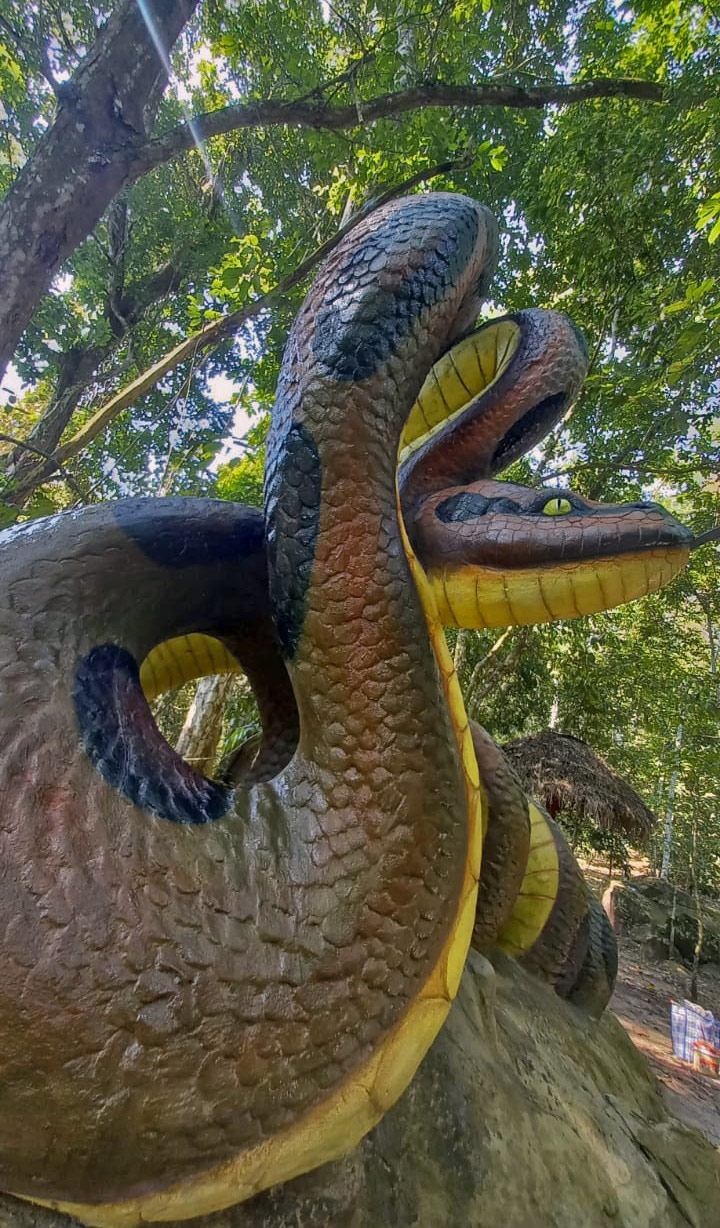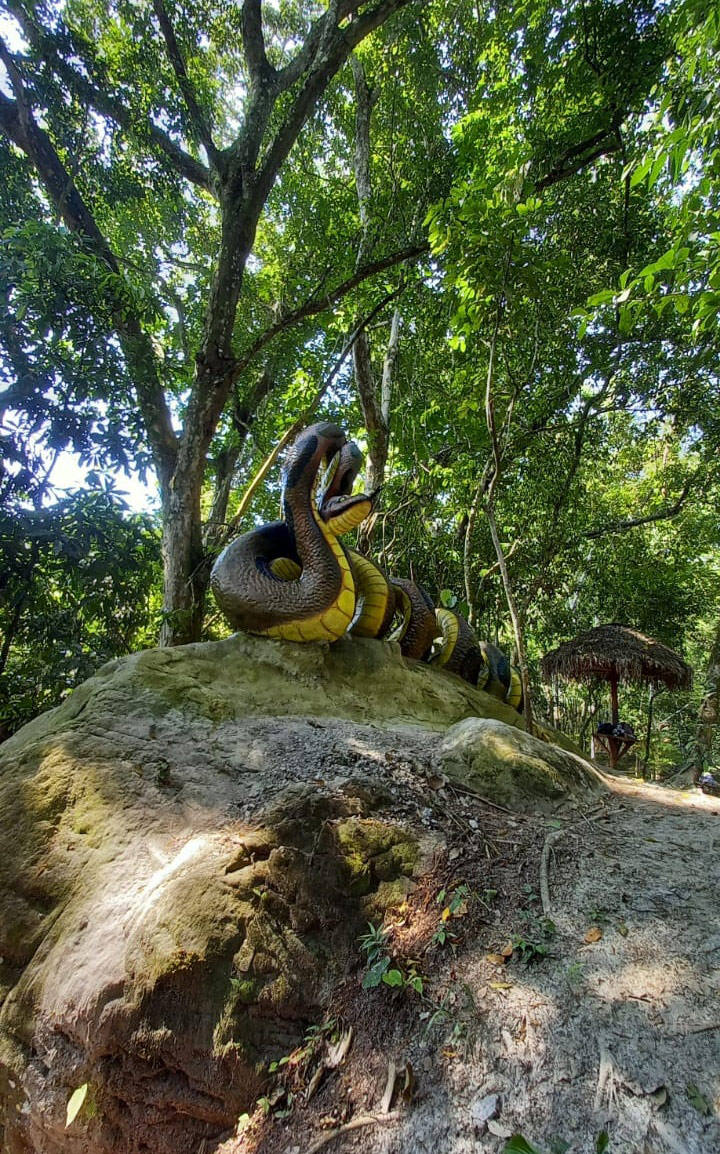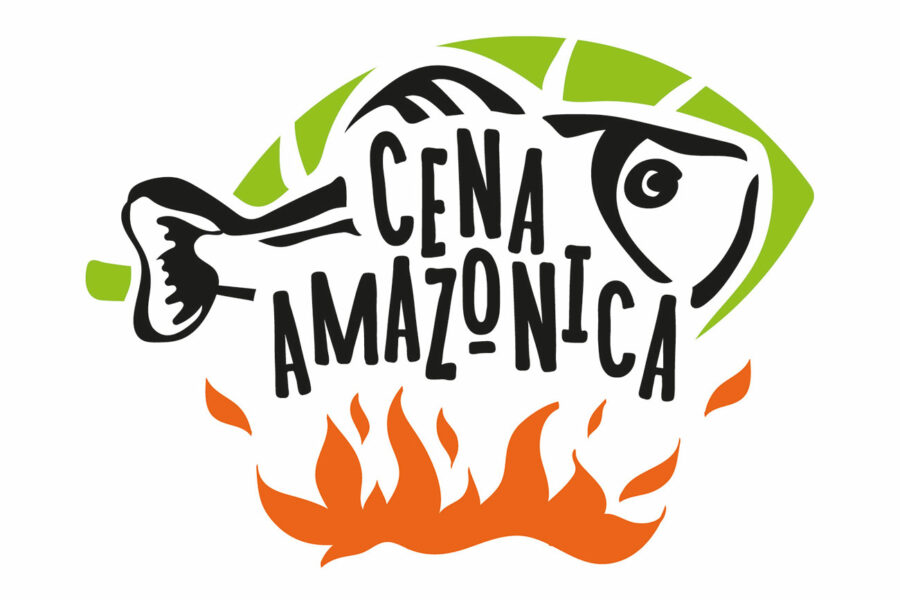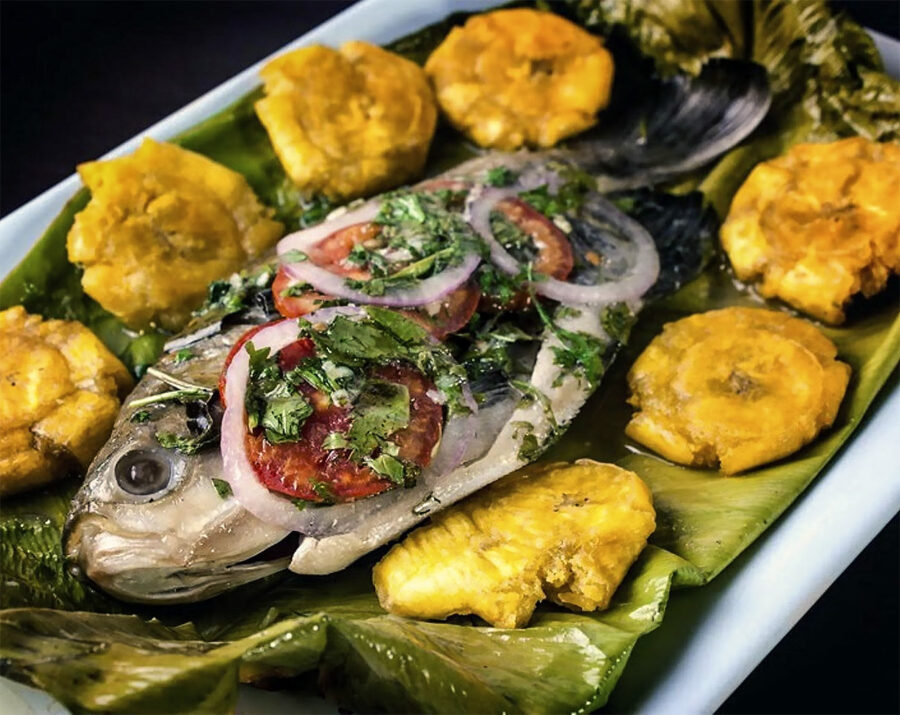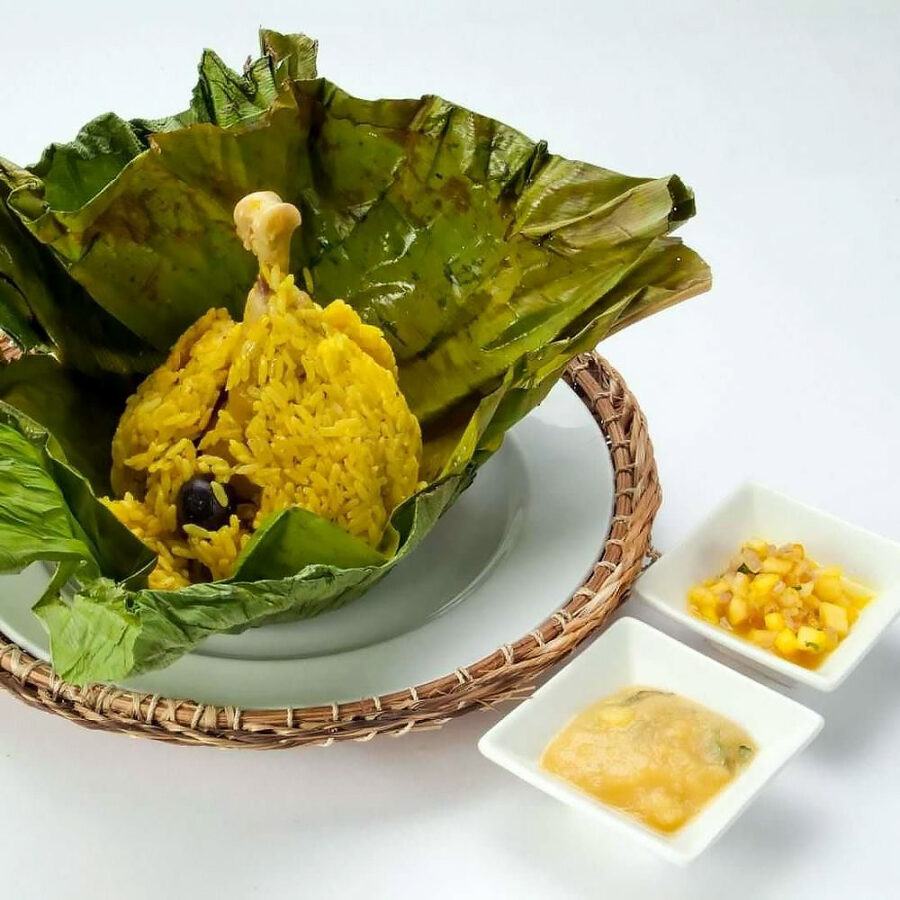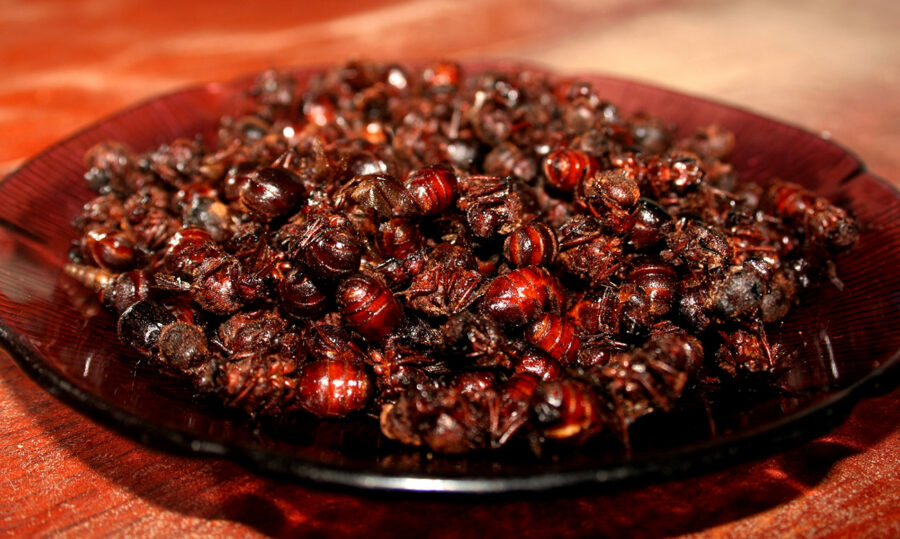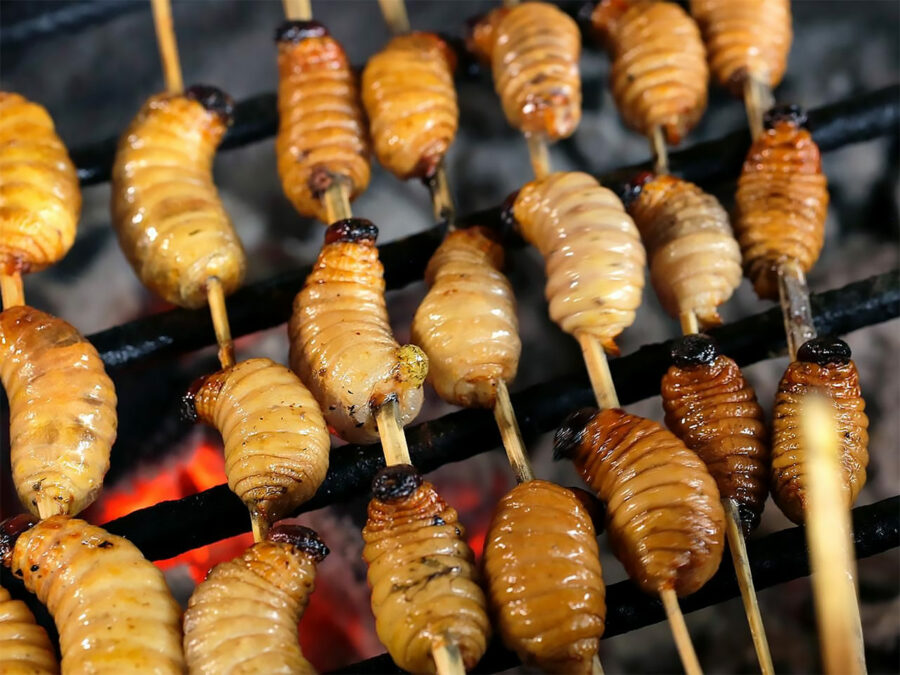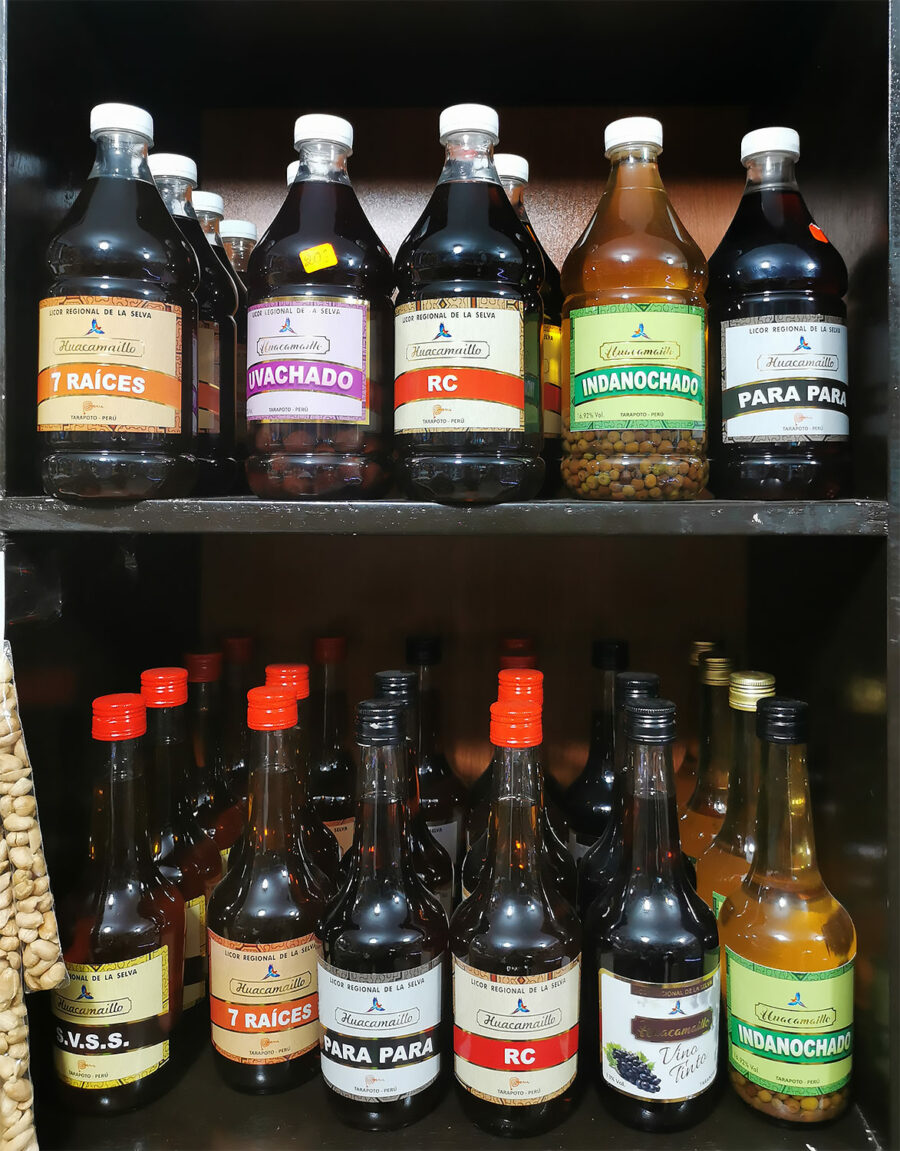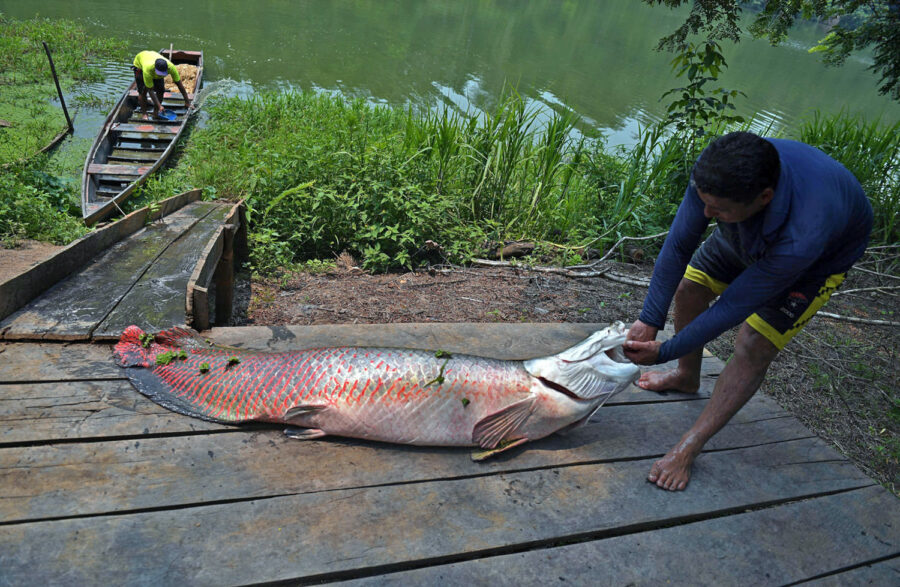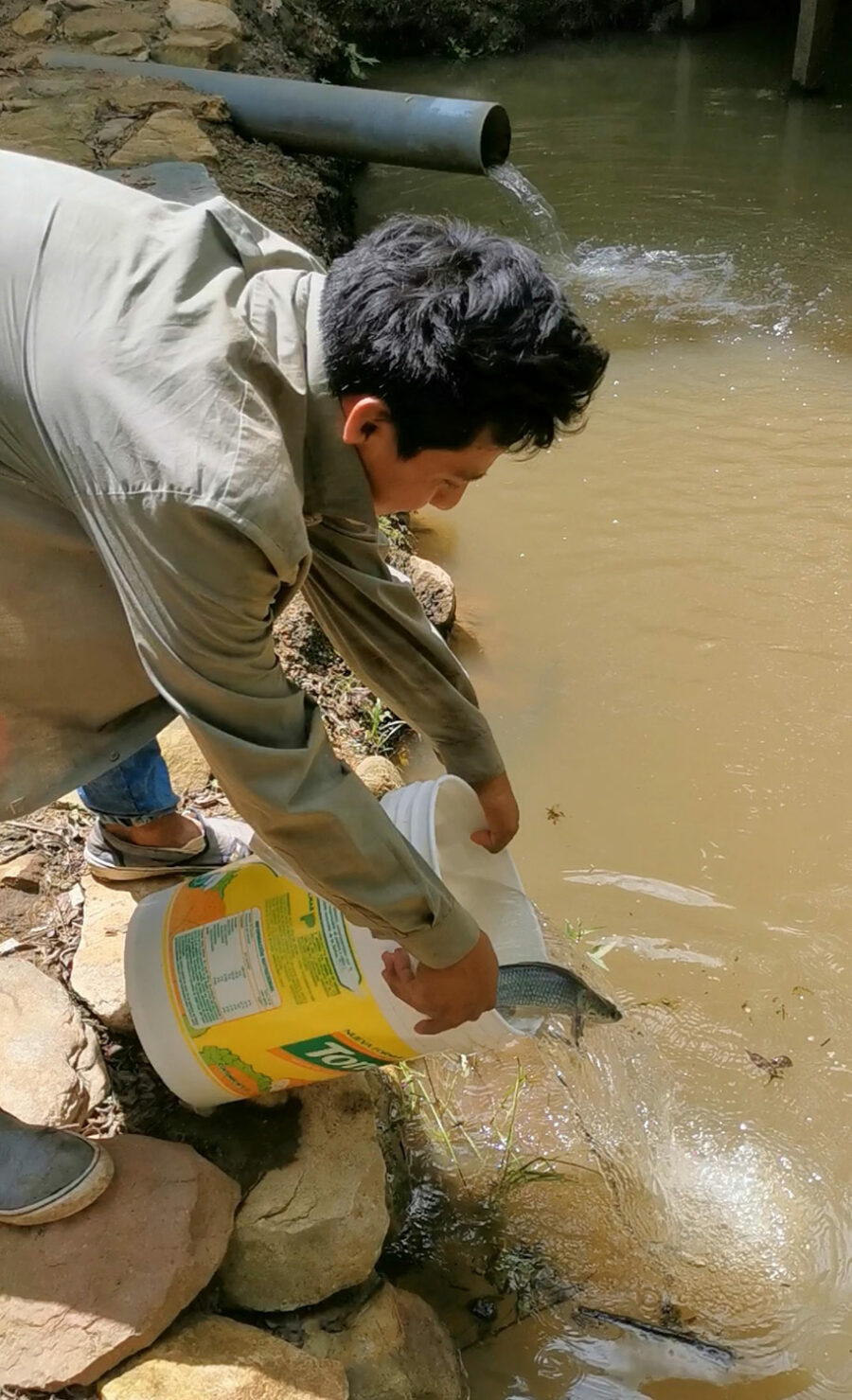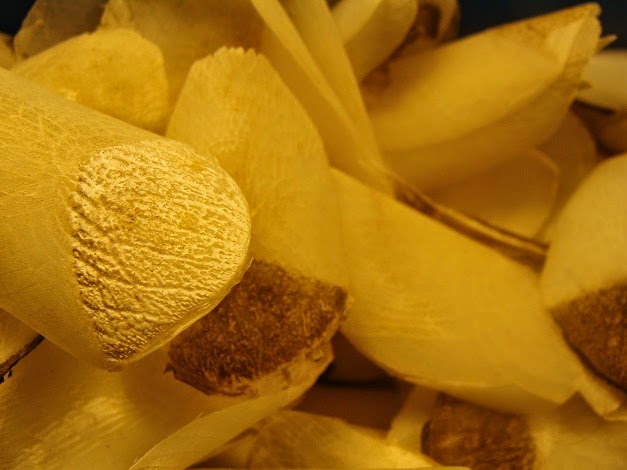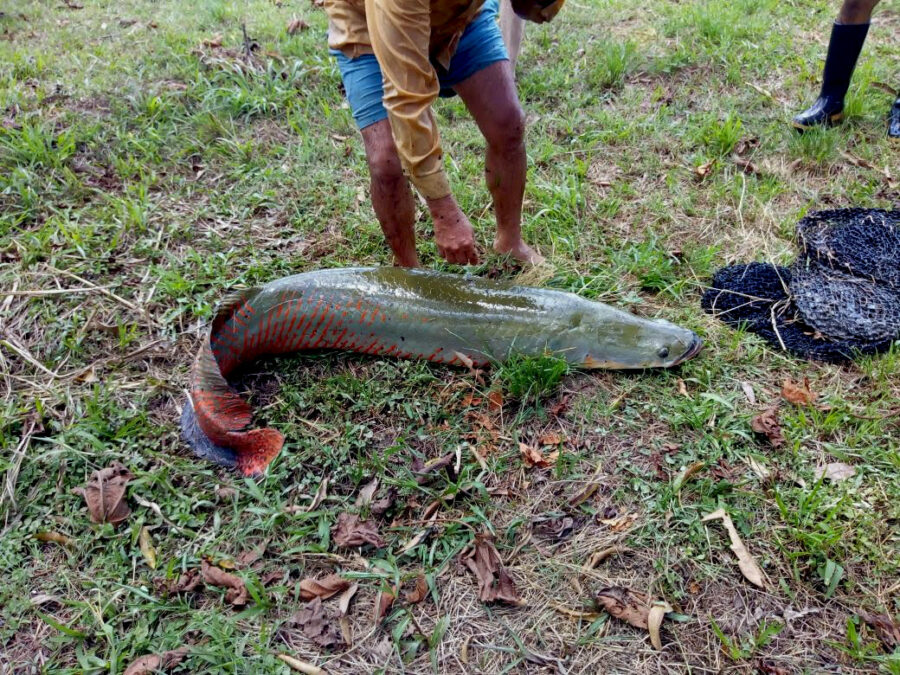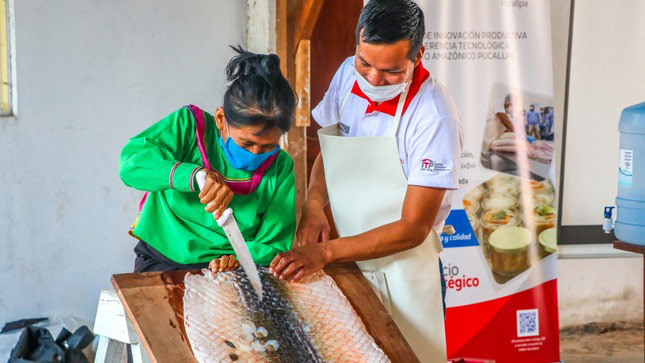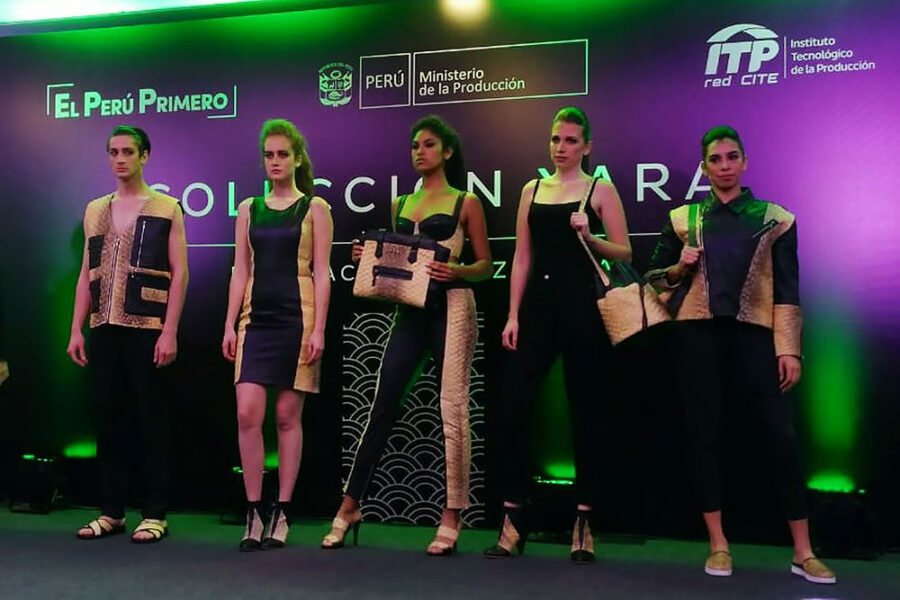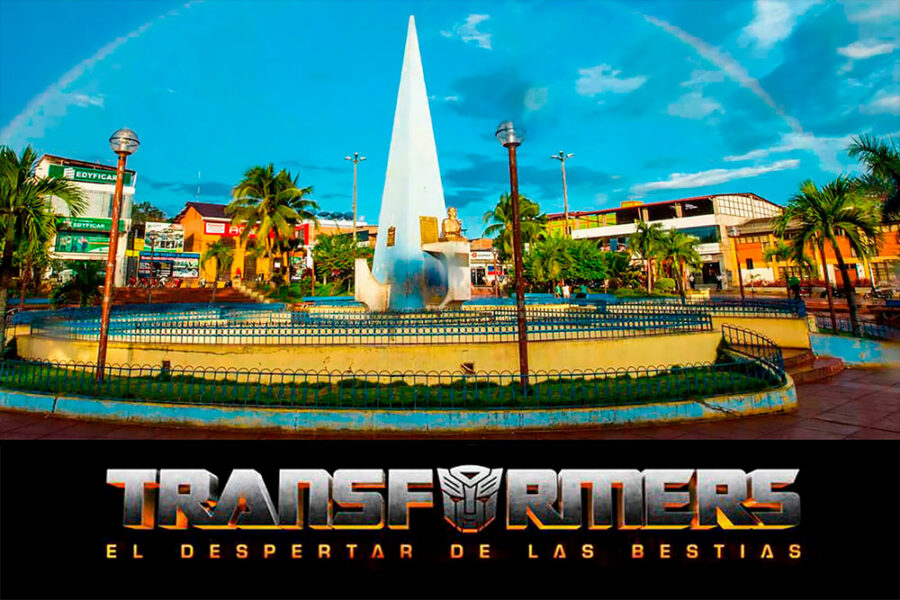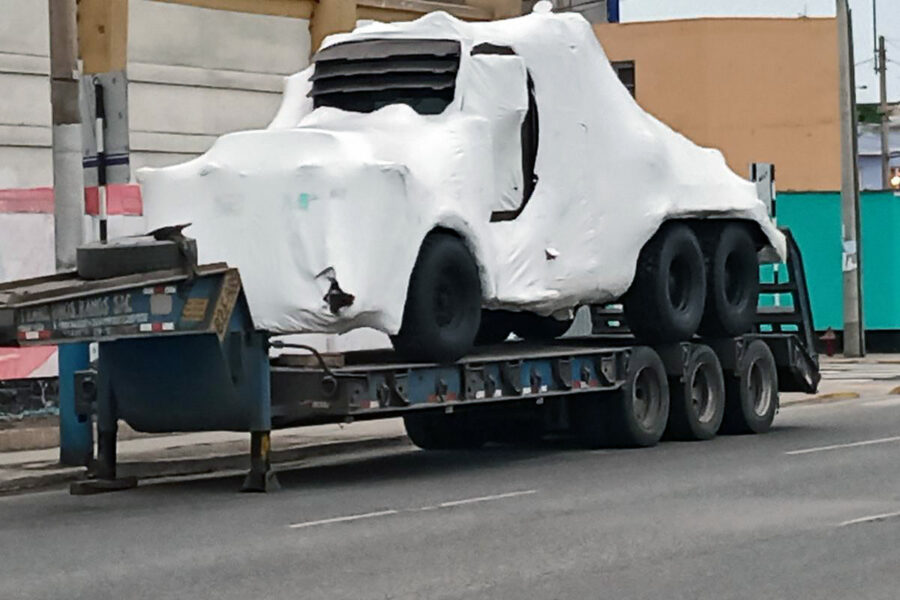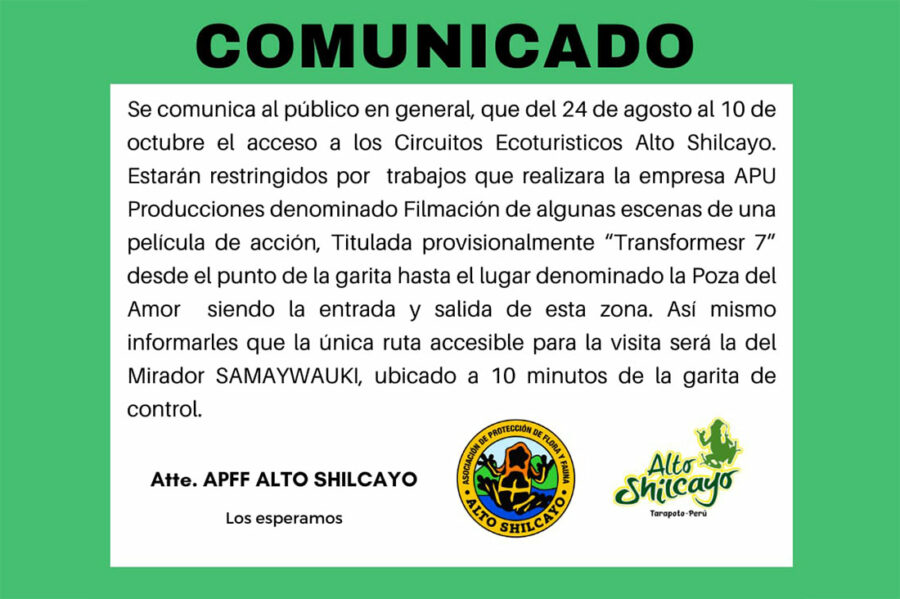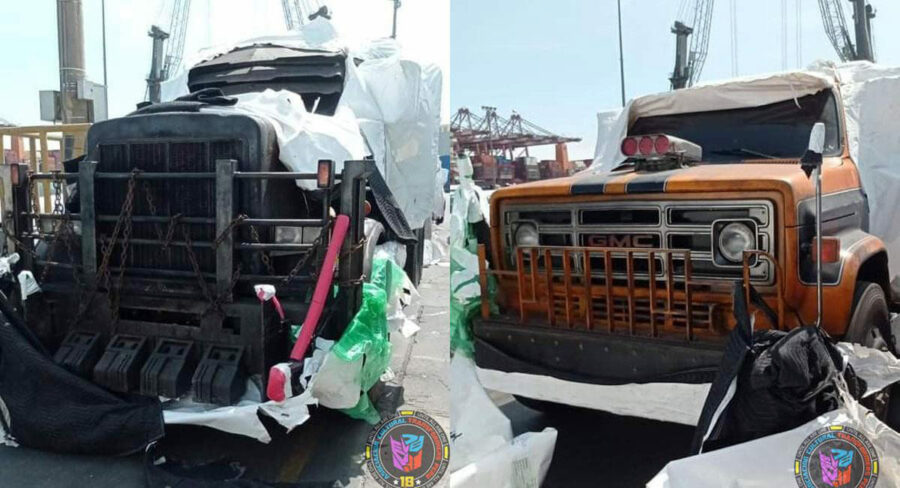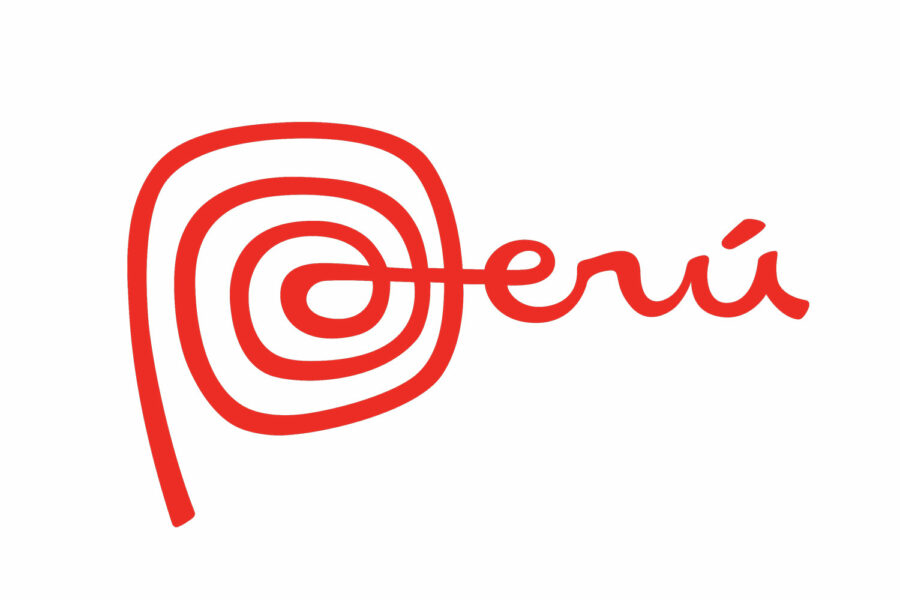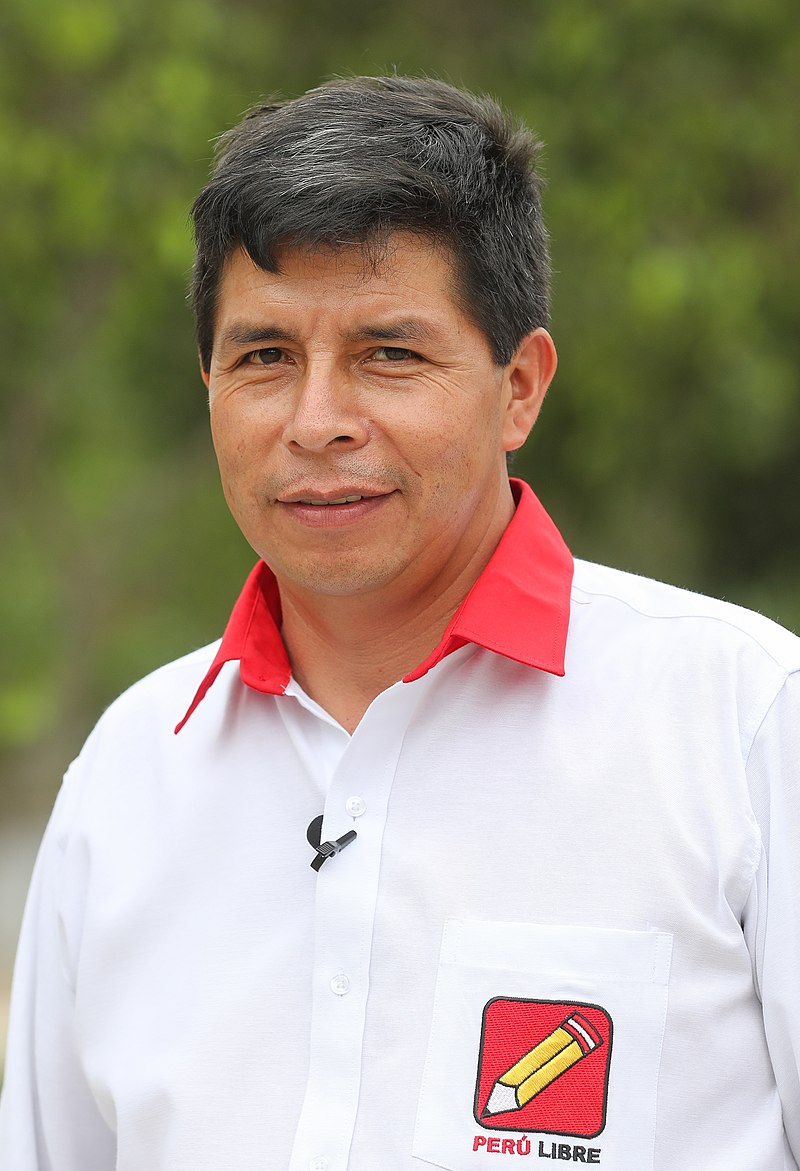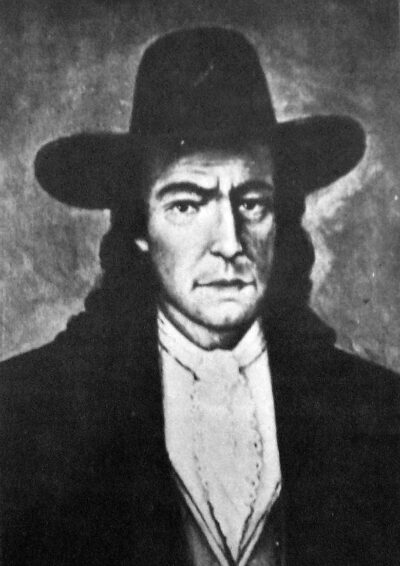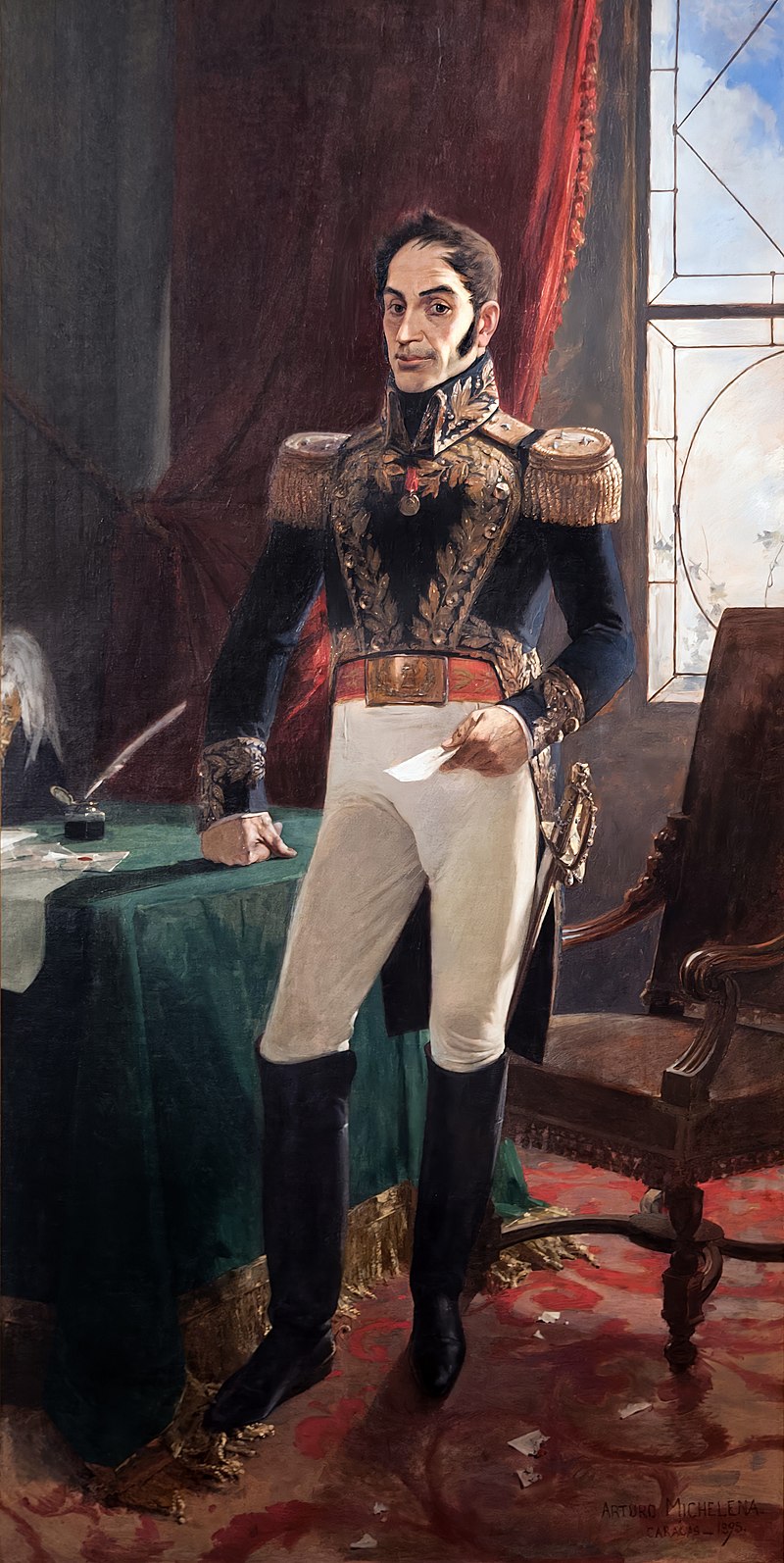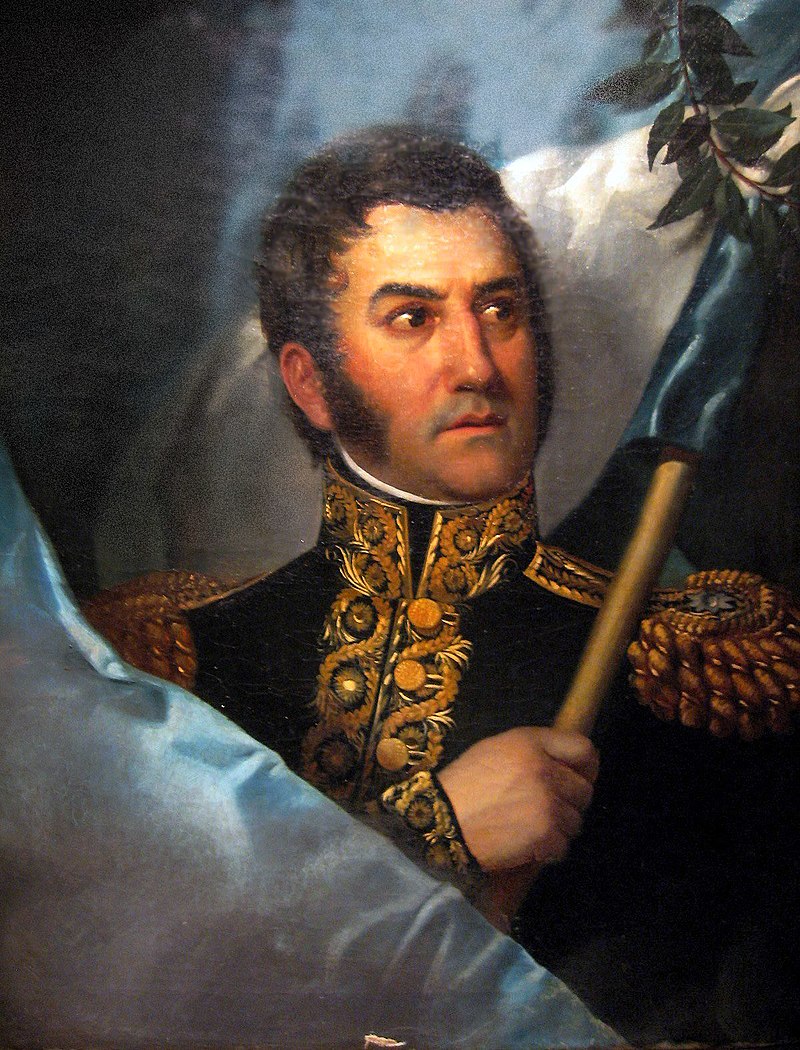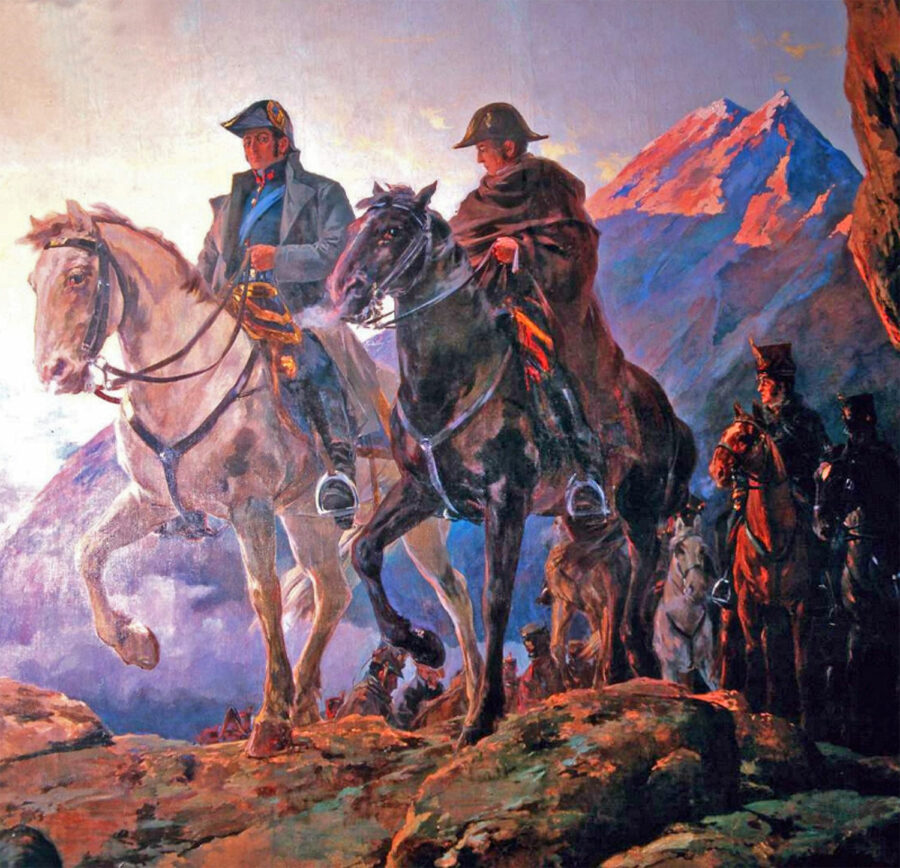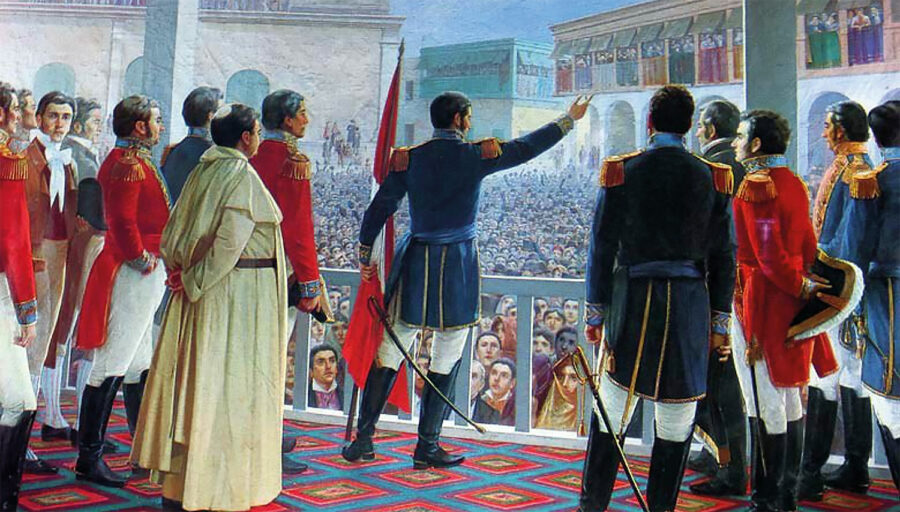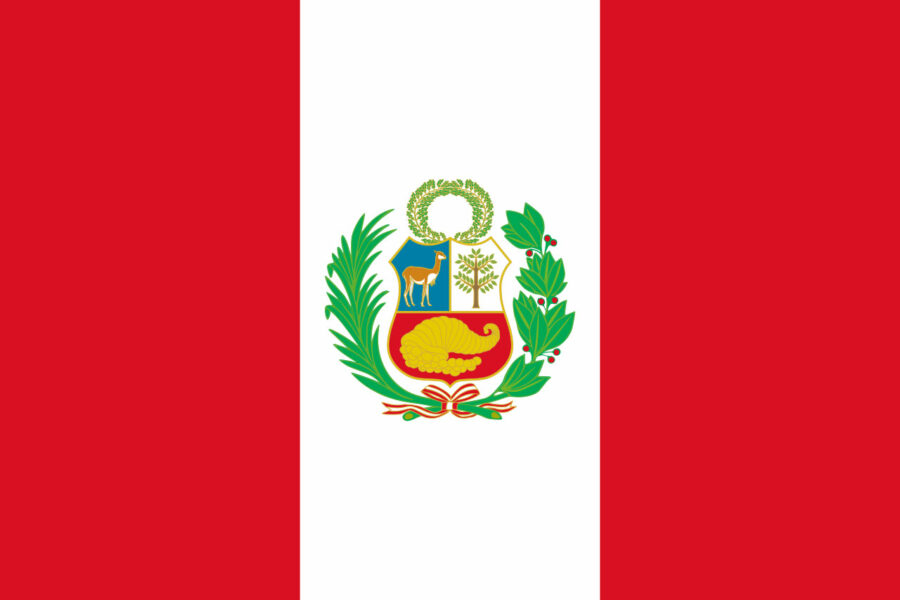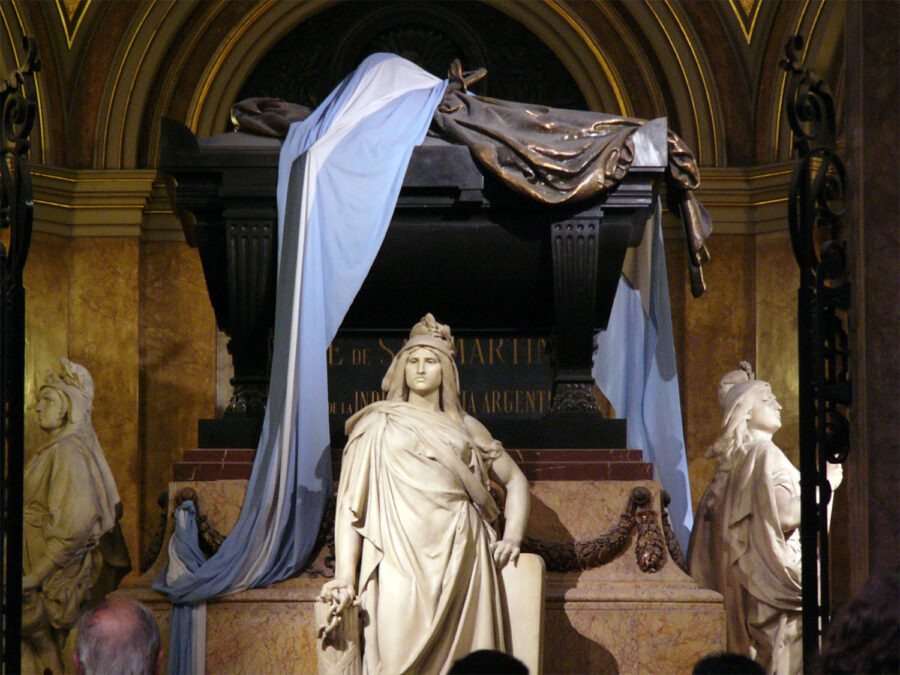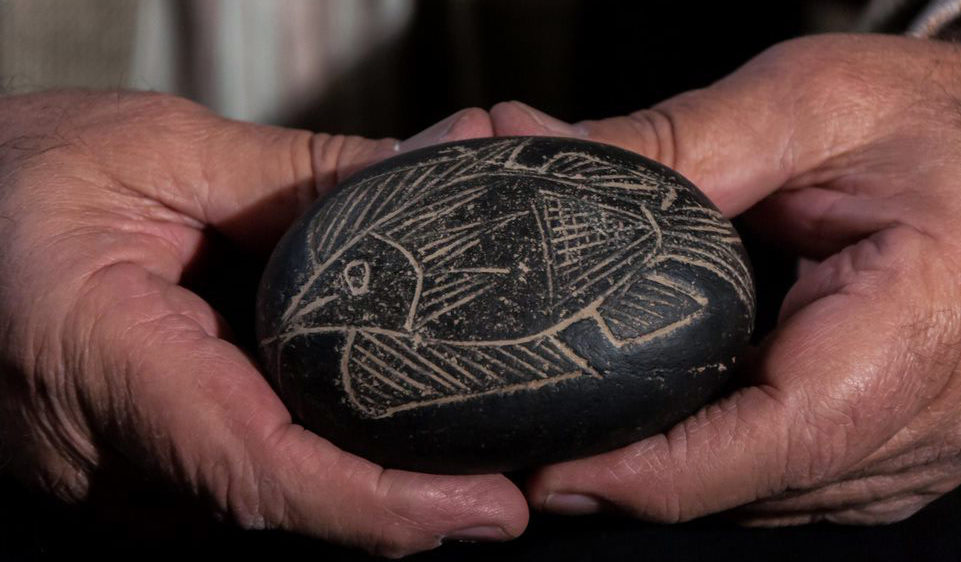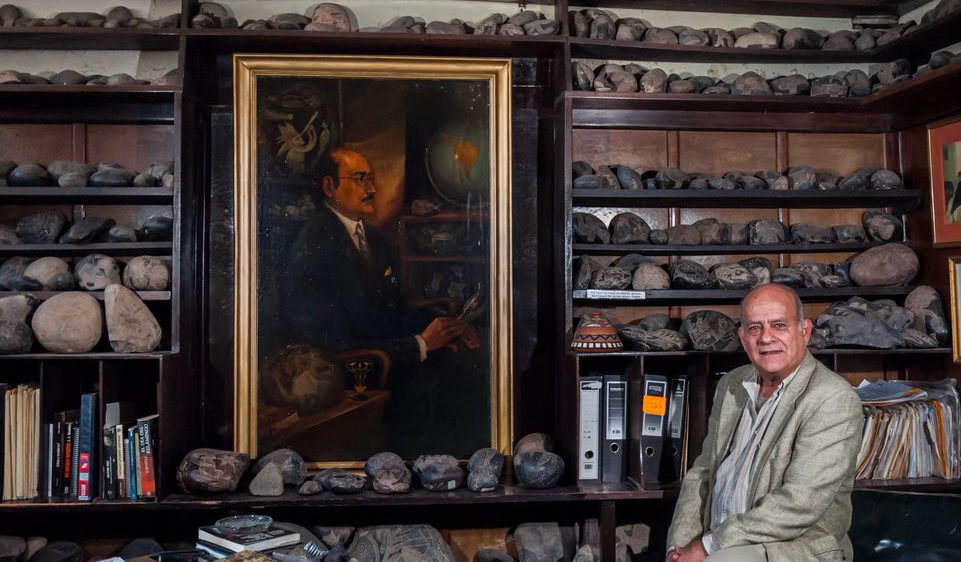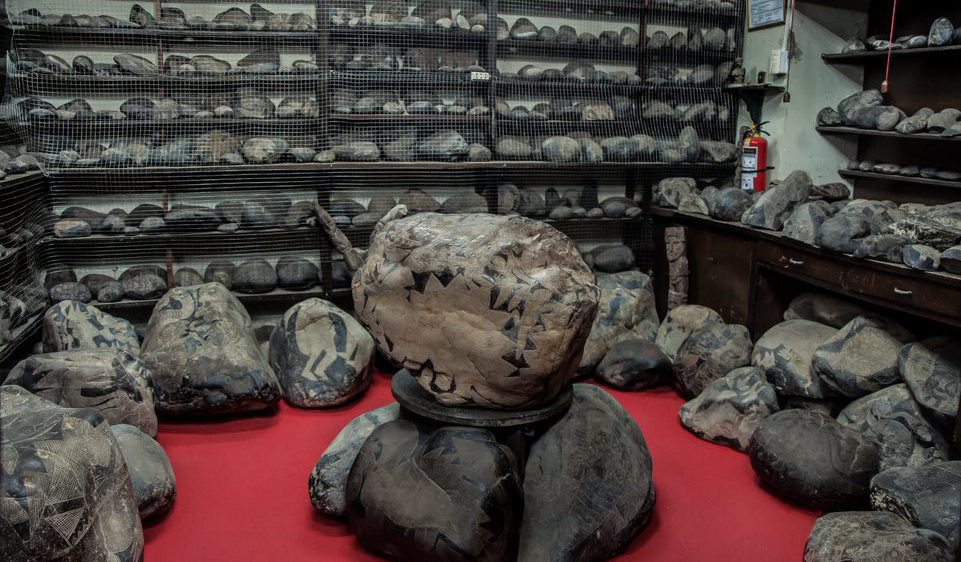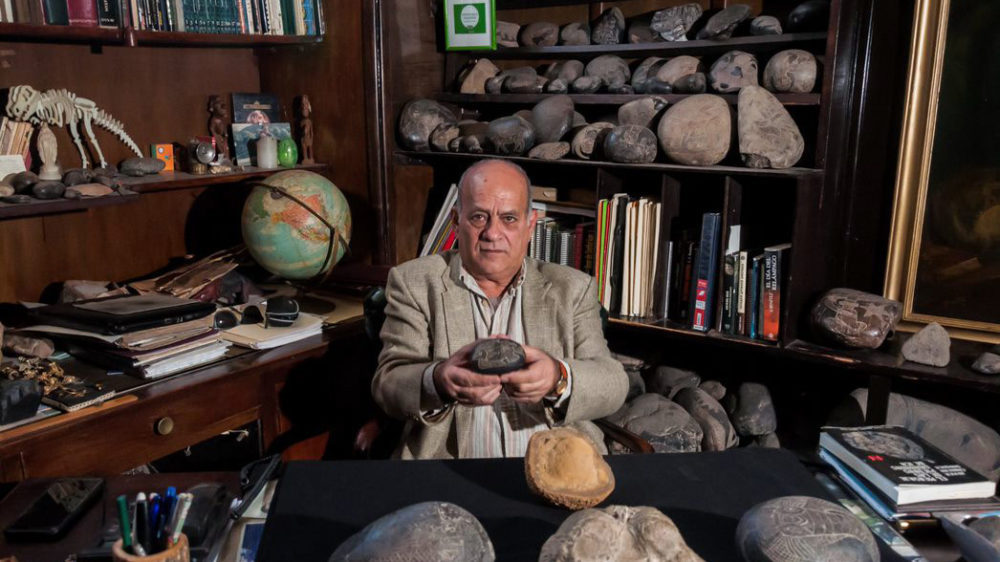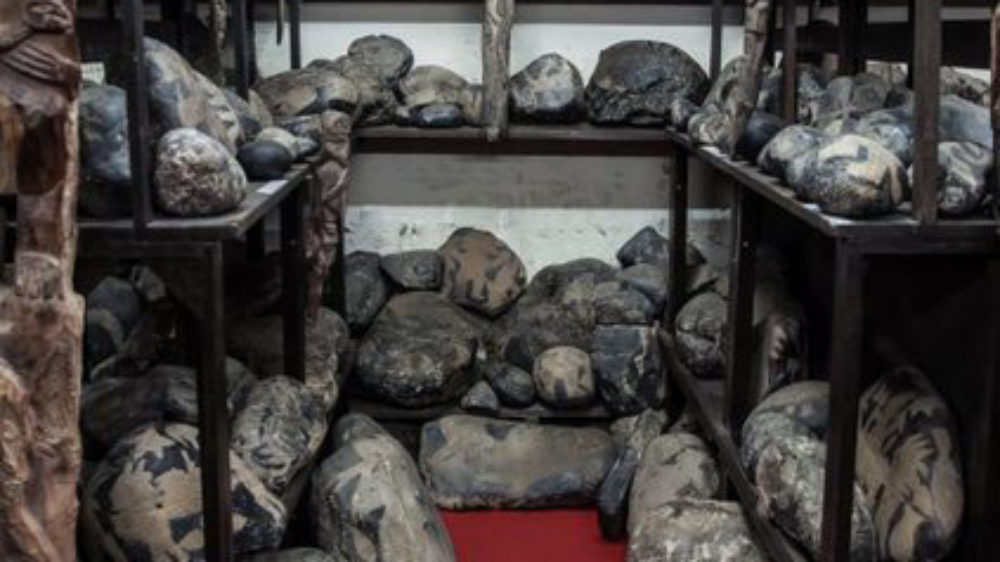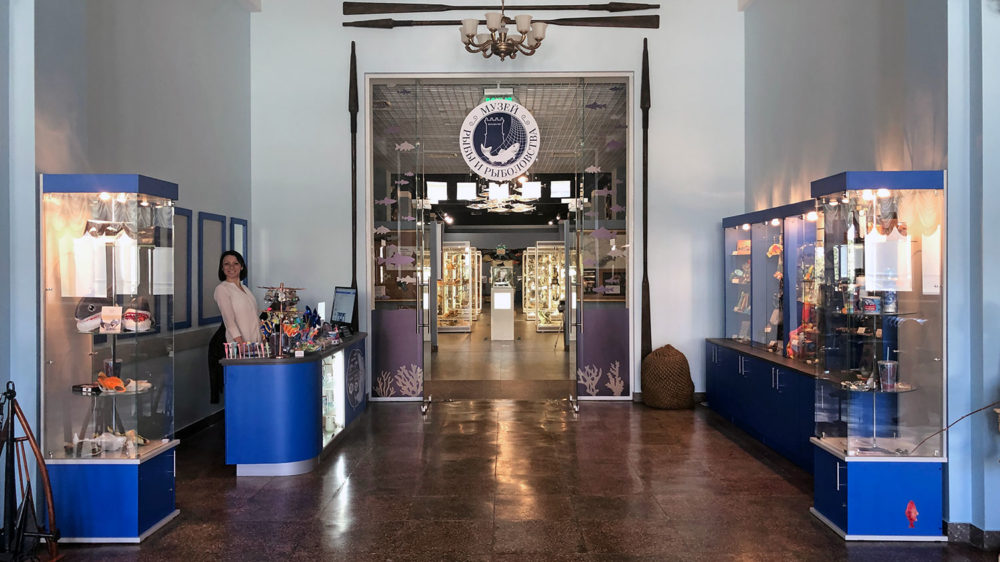During one week in our Ecolodge “Cordillera Escalera”, you will get acquainted with the oldest bearers of the Amazonian culture, go through 3 Ayahuasca ceremonies and look behind the mysterious curtain of your consciousness. Nothing is closer to nature than living far away from civilization and a diet based on plants by teachers.
Weekly retreat “Liana spirit”

The route for May Day

In Peru, it is time to go for a walk on a new route called Path of Biodiversity, which goes through the territory of our hotel and the nearby Chakruna Park. We worked on its creation and design for a whole year, and now we have a great attraction for tourists who will come to Ecolodge Cordillera Escalerа from May 1.
Why did we choose this date to open the route?That’s simple: it’s a day off in Peru, as well as in many other countries. A little history: on May 1, 1886 riots began in the United States. Workers in New York, Chikago and Detroit went on strike against 14-hour workday. The protests lasted for several days and ended tragically, but after a while the working day was reduced to 8 hours. The idea of international solidarity among workers swept over the globe after the May Day strikes were joined by trade unions around the world.
Since then, the holiday is celebrated everywhere, but it has its own specifics in every country. For example, in Australia, Labor Day is celebrated in different states on different days, in Russia, three days in a row, and in Japan, it is postponed to November 23, and is called the Day of Gratitude to Work. In the United States and Canada, Labor Day is celebrated on the first Monday of September.
The holiday came to Peru in the beginning of the XX century, when the country’s trade unions began to support workers around the world. From the end of 1918 to the beginning of 1919, a wave of protests and strikes took place in Peru, involving mainly textile and bakery workers, drivers and junior police officers. The result of these protests was the publication of a decree by President José Pardo on 15 January 1919. The document stipulated that the working day must not exceed eight hours. In addition, abor reguations for women and children were laid down.
So, Labor Day is a holiday! And a great chance to have a walk on the territory of Ecolodge: what will tourists see there? On the Path of Biodiversity you can meet many Plant Teachers, such as Ayahuasca, Chakruna, Ohe, Chuchuasi, Matiko, Nina Caspi and many others. During the journey, our guides will tell you about the variety of fruit plants on the territory of Ecolodge. You can taste seasonal fruits, find out which plants can be sources of water, and what plant food is best to ease the hunger if you have to spend a long time in the Amazon selva.
On the way, guests will see sculptural compositions with the most popular characters of Amazonian legends, Anaconda and Chuyachaka. Those who wish can freshen up in the mountain river with a well equipped beach on the bank, and then meditate in the bamboo grove. Part of the entertainment program is feeding the giant paiche fish! Someone is going to be lucky enough to meet the unique Shansho birds of the Hoatzin family. For those who are tired, there are stops, during which you can ride the swing, relax on a huge fallen tree trunk and maybe scribble your name on it to commemorate your visit. The highest point on the route is the observation point overlooking the Shilkaio and Tarapoto river valley. Those who are interested in folk medicine will be able to visit the Ayahuasca Museum exhibition, which we have already written about in previous news.
Ecolodge Cordillera Escalera team is always in search of new and interesting ideas. We work a lot for their implementation, and we are always happy to share the result! We will gladly guide you along the renovated path and can guarantee that the route will charm and impress every visitor!
How to grow your dragon?

The rainy season in the Amazon is coming to an end. This is the best time to plant trees and shrubs. The soil is moistened abundantly, and even accidentally fallen seeds very quickly germinate, sprout roots and quickly gain strength. Seizing the moment, we decided to plant on the territory of our Ecolodge Cordillera Escallera several beautiful and useful Amazon plants.
One of them that deserves special attention is a unique South American cactus Pitahaya (lat. Hylocereus undatus), which in the whole world is known as dragon fruit. We borrowed two Pitahaya cuttings from our neighbor, and we planted them next to the Ayahuasca Museum. While the Peruvian climate is doing its job, and the neighbors’ cuttings are growing, let’s figure out together what makes this plant so famous!
The birthplace of Pitahaya is Central America, firstly mentioned by the Aztecs. After the discovery of the two continents by the Spaniards, this cactus was brought to Europe, and from there it got to Asia, where it took root so well that it became part of local myths. According to one of the legends, dragon fruit was created by fire-breathing dragons, with whom people fought in time immemorial. When the dragons died on the battlefield, they gave their last fiery breath, and bright fruit rolled out of their mouths. According to legend, they contained part of the dragon’s flesh. Warriors took Pitahaya and brought it to the Emperor: it was believed that a man who tasted the dragon fruit would possess the strength and bravery of the dragon. That’s why, as the legends say, all dragons have been exterminated! The name “dragon fruit” is also associated with the fact that this cactus, as a rule, wraps trees like a vine, and its shape is similar to the body of a dragon.
There are several features that make this plant unique. For example, its blooming only lasts one night. The buds open under the moon, and in the morning they are already gone. That’s why in some countries pitahaya is called “the flower of one night” or “moon flower”. The size of the flowers is also impressive: 30 centimeters in diameter, these are the largest flowers in the entire cactus family!
The legendary fruit of Pitahaya are not similar to other fruits: they have oblong shape and contain creamy pulp with tiny black seeds. The pulp is rich in antioxidants, vitamins, minerals, as well as enzymes that are easily assimilated and may help with stomach upset (this property is very valued by travelers). Dragon fruit seeds are a source of tannins that increase visual acuity and help with diabetes. A high content of flavonoids and sterols helps to control cholesterol and has a beneficial effect against cardiovascular diseases.
Most often, the pulp is white. The Costa Rican Pitahaya has purplish red skin and pulp. Pitahaya also can have yellow skin (this variety is considered the sweetest). But the most common subspecies has fruit with bright pink skin and white pulp.
This interesting cactus now grows in Ecolodge Cordillera Escallera. Given our climate, the first harvest can be expected in 9 to 10 months. Therefore, by the New Year we expect to see the first “moon flowers” and decorate the festive table with our own dragon fruit!
About the current situation with flights from Europe to Peru

Dear guests and visitors of the site!
Due to the complicated situation in Europe, many airlines announced the temporary suspension of flights from Europe to South America until March 8. At the moment, flights from Istanbul, Armenia, Azeybarjan and Serbia continue to fly.
Our Ecologe «Cordillera Escalera» continues to work as usual. Summer is coming to an end in Peru, and the rainy season is ending in the Amazon regions. Evergreen selva breathes freshness and aromas of flowering plants after heavy rains. This year there are a lot of flowers on orange trees, in a couple of months there will be a harvest!
We are waiting for you in our Ecologe!
Anaconda on «Chakruna»

On January 7, 2022, on the territory of the nature and recreation park «Chakruna», which is part of the territory of the Ecolodge «Cordillera Escalera», a gigantic creature shrouded in many legends and beliefs settled — Anaconda. The four-meter sculpture is located on a huge stone separating the territory of the park from the Shilkayo River. This work was done by local sculptor Beringh Oliviera, the process of making the «snake monument» took more than two months. The main material is decorative concrete, inside is a metal frame, outside is a paint coating, it is in this technique that most of the local «monuments» are realized in numerous Indian settlements.
The Anaconda is one of the symbols of the Amazonian forests, its spirit, patron and deity, to which local shamans have since ancient times addressed. According to Inca traditions, the Goddess of the Earth Pacha Mama turns into an anaconda when she wants to show herself to people, and in Amazonian tribes it is with this reptile that the image of the spirit of Ayahuasca is associated.
The sculpture of anaconda has decorated a tourist route through the park «Chakruna», which begins at the entrance to our Ecolodge and is available to both Hotel guests (free) and visitors from the outside. A huge snake settled next to a well-maintained descent to the Shiklayo River, where there are also special places for swimming, a grill area, a pond with unique Amazonian paichi fish, sacred giant trees Oje and Huairuro, a bamboo grove and other natural beauties.
In the coming months, new points of attention and recreational areas will appear on the route, in other words, welcome to the hospitable jungles of the Chakruna Nature and Recreation Park!
Amazonian Dinner

Throughout November the collective of Ecolodge «Cordillera Escalera» worked on the new terrace in traditional style: there are now elements of Amazonian kitchen, clay furnace and ceramic utensils. Now we are planning to celebrate the completion of the works with a happy event. In December, we invite customers and guests of Ecolodge to an evening gastronomic program called «Amazonian Dinner».
What are the prospects for participants? Many interesting discoveries! We’ll learn about the traditions of the Amazonian cuisine. Each guest will be able to prepare several local dishes and taste ethnic tinctures.
Based on experience of communication with our guests we already know that almost every tourist who comes to Amazonia for the first time mainly is interested in what is cooked here and where to taste exotic Peruvian food. Therefore, we decided to mix the benefit with the pleasure: we plan not only to tell about the traditions of Amazonian cuisine, but also to teach our guests to cook in the way local people do. Real Peruvian chefs will mentor our gastronomic evenings: they will conduct master classes and design menus for each evening.
So, what should we try in the Peruvian selva? Fish dishes in the leaves of the bihao plant, brittle bananas with jerky. In the season, you will be offered siqui sapa ants fried on a fire, or barbecue with suri palm caterpillars. During our Amazonian Dinner we will tell you about local products, share recipes and secrets of preparation of dishes. Moreover, of course, we’ll explain how to drink unusual local beverages and cocktails. The dinner program lasts two hours, during which time each participant will feel both a cook and a taster. We hope the guests will feel the atmosphere of a typical Amazonian evening: we took care to create a completely authentic environment.
The dining place is a cozy chosa covered with palm leaves. It is a regular Amazonian hut with a small furnace and grill. Decorations of the interior made of wood, seeds and scales of fish paiche, hand-woven tablecloths and national costumes of promoters are completely made in traditional style, from local materials.
This means you will have a real Peruvian family dinner with the stories of the selva and its inhabitants, and with a special sound accompaniment: the cicadas here start their screaming just during dinner. Real music will also be played in our chosa: these are records of local folk orchestras in which musicians play national drums, flutes and twitters.
We are ready to share with you the bright flavors, aromas and unusual mood that permeates the evenings in the selva. We are waiting for you in Ecolodge «Cordillera Escalera» for dinner. We guarantee that the impression from this meeting will stay with you for a long time!
The Amazonian Kingfish now lives in our Ecolodge

Earlier we talked about the fact that we released 250 Tilapia fish fry into our pond for rearing, and that we were going to practice keeping small fish and start breeding larger ones. So, last week, we purchased and released 10 young individuals of a unique Paichi fish in our lake «Lago Lindo»! Thank you for your help in acquiring this natural rarity to Karol and Brenda, the owners of «Piscifactoria El Paraiso» — a professional Paichi nursery near the Tarapoto city.
Paichi, Arapaima or Piraruku is the name of a fish from the Arapaimida family in various regions of South America. This is one of the largest freshwater fish in the world! According to the stories of local residents, individuals up to 4 m in length can be found in distant backwaters! But so far the officially registered record for this species is a fish 3.07 meters long and weighing 200 kilograms. In the last century, Arapaima was introduced to Africa and Asia, where it successfully adapted to local conditions.
The biological features of this fish are worthy of a separate story: a unique dual respiratory system and very strong scales. The pharynx and swim bladder of the Arapaima are covered with so-called «lung tissue», which allows the fish to breathe ordinary air. Most likely, this feature developed in the course of evolution due to the low oxygen content in the fresh waters of the Amazon tributaries. That is why Paichi should pop up every 15-20 minutes to exhale and take air again. The scales of this fish are several times stronger than its bones! Studies have shown that the scales consist of several layers of strong fibers and each layer is located at an angle with respect to the previous one, which provides incredible strength! This characteristic allows the super-fish to quietly coexist with such dangerous predators as Piranhas.
Features of respiration and scales provide protection for fish, but other than that, it should be noted that the Paichi themselves do a lot to preserve the genus — which is unusual for fish)), they take great care of their offspring. The male, after fertilization of the female, pulls out a special hole in the mud, where the female lays eggs. After that, both parents monitor the safety of the eggs. As a rule, the father looks after the nest, and the female drives away predators. After the fry hatch from the eggs, for the first few months they stay near the male’s head and feed on a special white substance secreted by special glands that are located on the head of the Paich behind the eyes. This helps to teach the fry to always be close to Dad’s head, and in case of danger they hide in his mouth! Parents surround the fry with enviable care for up to 3.5 — 4 months, after which, already grown-up individuals begin an independent life!
It’s incredible, but the Arapaima is a representative of a species that has survived for millions of years of the development of the fauna of our planet! This is proved by the fossils of Arapaima, which were found in the Miocene Villavieja formation in Colombia. According to scientists, these fossils are about 13 million years old! These unique specimens can be seen in museums in France, England, USA, Brazil, Guyana, Ecuador and Peru.
For the Amazonian tribes, Paichi has always been a very respected fish. Her tasty and healthy meat has always been appreciated. In many restaurants around the world, boneless steaks from red meat are Arapaima and are considered a delicacy. Scales are used in the household as an emery and an element of jewelry, and the actual «skin» is also used as well as the skins of mammals — for the manufacture of jackets, shoes and bags.
Here is such a unique fish settled in our «Lago Lindo», which is part of the natural tourist route on the territory of our Ecolodge «Cordillera Escalera»! We will keep you up to date on how young Paichi individuals mature. For our visitors, there will be an opportunity to personally feed our pets from the catwalk. It’s an amazing sight when huge fish jump out of the water to catch the food thrown for them. Come and see with your own eyes!
And they came to the jungle… transformers )))

Dear friends, we continue to keep you up to date with the most interesting events in the valley of the Shilkayo river, where our Ecolodge «Cordillera Escalera» is located. This time, world-class news)))!
From September 14, shooting of a new part of the world blockbuster from the Paramount Pictures studio — «Transformers — 7» with the preliminary title «Rise of the Beasts» begins literally next to us. The shooting will take place in two locations in Peru — on the famous Machu Picchu and on the mountain river Shilkayo, exactly in that part of the Cordillera Escalera Nature Reserve, the road to which passes near the entrance to our Ecolodge.
Already on August 24, preparations for filming in Tarapoto began and access to this part of the reserve for tourists will be closed until October 10. Internet news is already full of photos of robot cars that have arrived in the Peruvian port of Callao, and fans of this endless «techno-series» are discussing the details of filming in full.
It is clear that all the details are kept a big secret, it is only known that the Peruvian authorities have set quite strict conditions for the film crew with obligations to preserve nature and architectural monuments. In fact, they will shoot mostly landscapes and the main characters-people, and cars and battle scenes are then drawn using computer graphics.
We hope that this picture will show in the brightest colors a beautiful Nature Reserve, where the «Cordillera Escalera» Ecolodge is located, whose territory-park pleasantly surprises guests every time. We also inform you that our facility continues to operate as usual, guests will be able to enter the territory of the «Cordillera Escalera» Ecolodge without hindrance … and quietly peek at the shooting ))!!!
¡Viva la Patria! ¡Viva la Libertad! ¡Viva la Independencia!

Long live Motherland! Long live Freedom! Long live Independence!
On July 28, the Republic of Peru celebrated the 200th anniversary of its independence. This significant day for all Peruvians coincided with the official inauguration of the country’s newly elected President, Jose Pedro Castillo Terrones (formerly a school teacher and trade union activist who gained fame in 2017 as the leader of a nationwide teachers’ strike). The international team of the Ecolodge Cordillera Escalera congratulated our guests on this wonderful event.
The proclamation of independence is one of the most important events in the history of not only Peru, but the whole of South America. For until the country was liberated from Spanish domination, the entire continent could not be completely confident in its freedom. The process of liberation from the Spanish colonialists began with the first uprisings of the indigenous peoples of South America, mestizos and Creoles and took a long time, but as a result, the Peruvians became a free and independent nation.
Back in 1542, King Carlos I of Spain established the Viceroyalty of Peru (Spanish El Virreinato del Perú), a territorial unit that was part of the Spanish colonial empire. The local viceroy was the main ruler and personal representative of the Spanish king. He was responsible for the administration of justice, the administration of the treasury, the baptism of Indians, the defense of the coasts from pirates, and internal security. During the existence of the Viceroyalty of Peru, it was ruled by 40 Viceroys.
During the era of the Napoleonic wars on the European continent, in 1808, French troops invaded Spain and placed it under the control of their emperor, which was followed by a blockade of the country from the sea by the British fleet. This event served as the impetus for the large-scale War of Independence of the Spanish colonies in America (1808-1826), which eventually led to the formation of modern states such as Mexico, Venezuela, Peru, Chile, Bolivia, Argentina, etc. The War of Independence of the United States, the Great French Revolution, the uprising of slaves in San Domingo (1791-1803) also contributed to the beginning of this war.
Many peoples in the Spanish colonies in South America have long been dissatisfied with the policy of the metropolis: wide prohibitions, discrimination, high taxes and prices for Spanish goods (Spain forbade its colonies to trade with other countries, for example, with Great Britain). The elite of the colonies were officials, generals and officers sent from Spain, who disdained the Creoles – the descendants of earlier settlers. The latter were not allowed to the highest administrative positions, so it was the officers from the Creole nobles who stood at the head of the liberation movement. But the most radical forces were the peasants and artisans from the Indians and mestizos, who wanted to free themselves from the dominance of large landowners, as well as slaves from Africa who hoped to get freedom.
Meanwhile, in Peru, the wealthy landowners and the owners of industrial enterprises and mines were royalists, that is, they supported the side of Spain. They feared Indian uprisings, such as the revolt of the Inca leader Tupac Amaru II in 1780-1781, and did not want trade competition from Chile and Argentina. Therefore, the Peruvian uprisings of 1812-1816 were easily suppressed.
This situation changed with the attack on the Viceroyalty of Peru by the troops of General José San Martín from the south (1820-1823) and General Simon Bolivar from the north (1824). Jose Francisco de San Martin and Matorras (1778-1850) was born in what is now Argentina to a family of wealthy landowners. He was assigned by his parents to a prestigious seminary in Madrid, but dropped out and enlisted in the Spanish army. San Martin fought in North Africa with the Arabs and Berbers, took part in the wars of Spain with France, Great Britain and Portugal. During the occupation of Spain by Napoleon’s army (1808-1812), he led one of the partisan detachments (like in Russian Empire his colleague Denis Davydov). In 1814, San Martin became the commander of the Northern Army of Argentine patriots who fought against Spanish colonization, and subsequently earned the title of Argentina’s national hero.
In 1818, Jose San Martin crossed the Andes from Argentina and defeated a small army of royalists, in 1820 he crossed the sea to the south of Peru and landed near the city of Pisco, where he created the flag of an independent country. Then he took Lima, forcing the troops of the Viceroy La Serna to withdraw to Cuzco. On July 15, 1821, the general convened the Council of Nobility at the City Hall, as a result of which Manuel Perez de Tudela (later Minister of International Relations of Peru) developed the Act of Independence.
On July 28, at 10 a.m., San Martin left the Palace of the Governors, accompanied by the Mayor of Lima, dignitaries from the National University of San Marcos, as well as the chief prelates of the church and the abbots of the monasteries. The independence ceremony took place in the central square of Lima – Plaza de Armas, where about 16,000 people gathered in it and in the surrounding streets. San Martin showed the people the flag he had created in Pisco and proclaimed: – From this moment Peru is free and independent by the common will of the people … Long live Motherland! Long live Freedom! Long live Independence! There was thunderous applause, the bells of the main cathedral and all the other churches in Lima rang out, and the cannons saluted. The ceremony was repeated in three other locations: in Plazuela de la Merced, opposite the Descalsos Monastery, and in Plaza de la Inquisition (now Plaza Bolivar), opposite the Legislative Palace.
However, hostilities continued, and the royalists were finally defeated at the Battle of Ayacucho with the help of the troops of Simon Bolivar (1783-1830). This general earned the title of national hero of Venezuela, and in 1819-1830 he was the president of Greater Colombia, which united the territories of modern Venezuela, Colombia, Panama and Ecuador. After the final liberation of Peru from Spanish rule in 1824, San Martin headed the first government of the independent country. In 1825, the territory of Upper Peru separated from it and took the name of Simon Bolivar, proclaiming itself the Republic of Bolivia.
But back to our days. The celebration of the 200th anniversary of the independence of the Republic of Peru did not pass by the Latin American Department of the Russian Foreign Ministry. Department Director A.V. Shchetkin noted in his official statement: «Russia and Peru are linked by long-standing bonds of friendship and cooperation… Relations between our countries have always been characterized by mutual respect, solidarity and assistance».
He also stressed that, as multinational states, Russia and Peru respect the richness and diversity of the cultures of their partners. Since the 1970s, thousands of Peruvians have received higher education in the USSR and then in the Russian Federation. In recent years, there has been a noticeable increase in the number of Russian tourists in Peru. Such objects as the ancient city of Machu Picchu, Lake Titicaca and the figures of the Nazca plateau are familiar to many of Russian citizens, as well as the gastronomic traditions of Peru, noted in many world rankings. The team of the Ecolodge Cordillera Escalera is optimistic about the future of Russian-Peruvian relations and believes in the further development of cultural and tourist ties between these countries.
Mysterious stone from Peru can now be seen in the Crimea!

We recently donated one unique thing to the collection of our friends from the Museum of Fish and Fisheries in the city of Feodosia (Republic of Crimea). The history of a simple-looking stone with an engraved image of a fish can be describes as «It`s unbelievable!».
Among the many wonders of Peru, there is the phenomenon of the so-called «Ica stones». There are about 50,000 known such boulders collected in the Ocucaje District, 40 km from the Peruvian city of Ica. These andesite stones are run in by river water and bear engravings with various subject images made by representatives of pre-Columbian civilizations. Ica stones have various shapes and sizes, their weight ranges from 15-20 g to half a ton. The most common size is about the size of a watermelon. The color is usually black, but there are gray, beige and pinkish ones.
The Ica stones were made truly famous by Dr. Javier Cabrera Darquea (1924-2001) – a descendant of the Spanish conquistador Don Jerónimo Luis de Cabrera and Toleda, who founded the city of Ica in 1563. Professor of Medicine, Dean of the Faculty of Medicine at the University of Lima, founder of the medical school at the National University of Ica and founder of the Museum of Ica Stones, Dr. Cabrera began collecting his collection back in 1966.
Over time, he revealed a pattern in the system of images: they are grouped in a series of 6 to 200 stones, forming a kind of library. In each plot, the size of the stones changes (increases), as well as the method of applying the image: from engraving to low relief techniques. The collection of Dr. Cabrera is not the only one, but the largest collection of Ica stones: it has about 15 thousand exhibits.
A third of the images on the stones contain erotic scenes, as well as plots of human organ transplants, observation of celestial bodies, hunting, etc. Stones with images of ancient maps, unusual (alien?) creatures and even dinosaurs are of special interest! For example, diplodocus is depicted with triangular vertical plates on the back, the presence of which was confirmed only in the early 1990s. And in a number of drawings, these animals are shown standing on their hind legs, which paleontologists did not know about back in the 1940s-1950s.
The result of Dr. Cabrera’s research was the book «The Message of the Engraved Ica Stones» (Spanish: El mensaje de piedras grabadas de Ica), published in 1976. In 1996, the doctor opened the Museum of Engraved Stones (Spanish: Museo de Piedras Grabadas) in the center of Ica, where his collection is now kept. It is currently called the «Science Museum of Javier Cabrera» (Spanish: Museo Científico Javier Cabrera). In Russia, the Ica stones became widely known after the release of the documentaries «The Secret of the Ica stones» from the series «Forbidden Themes of History», as well as «Dinosaur is a friend of human». An interesting view of the origin of boulders was put forward by Andrei Zhukov in his book «Ica Stones – the Message of an Impossible Civilization».
In the winter of 2020, we managed to visit the son of Javier Cabrera – Ernesto, who became the successor of his father’s work and the keeper of the secrets of the Ica stones. We made friends, got to talking and started translating the book «The Message of the Engraved Ica Stones» into Russian. Today the translation is ready, and we are waiting for the permission of Mr. Ernesto Cabrera to publish it in Russian.
We told him a lot about our museums, and at parting this venerable signor presented us with one of the copies of the first stone from his father’s collection. It was made to made an experiment to establish the engraving technique and the tools used. As a result, it was established that a fairly advanced technology was used to apply complex drawings (both for marking and for drawing images). Numerous attempts to reproduce the image with the usual tools used in working with stone in our time have not yielded the same result.
This artificial copy clearly shows a drawing of an ancient fish of an extinct species. The original stone itself is in the personal collection of Signor Ernesto Cabrera – he cherishes it above all else, because it is the very first stone from his father’s collection. He received it as a birthday present and became so interested in it that he devoted the rest of his life to collecting such stones.
We sended this gift from Ernesto Cabrera to the collection of our friends from the Museum of Fish and Fisheries in the city of Feodosia (Republic of Crimea). We are very pleased to know that in the vast world, two Museums have met so unexpectedly – the Science Museum of Javier Cabrera and the Museum of Fish and Fisheries. We wish Signor Ernesto prosperity and success in his project to reorganize the Museum and open its virtual version, which he is currently working on. We also invite you to visit our ecolodge Cordillera Escalera in the vicinity of the Peruvian city of Tarapoto. Our staff speaks English, Spanish and Russian and is ready to introduce you to one of the most interesting countries in the world! 😊
